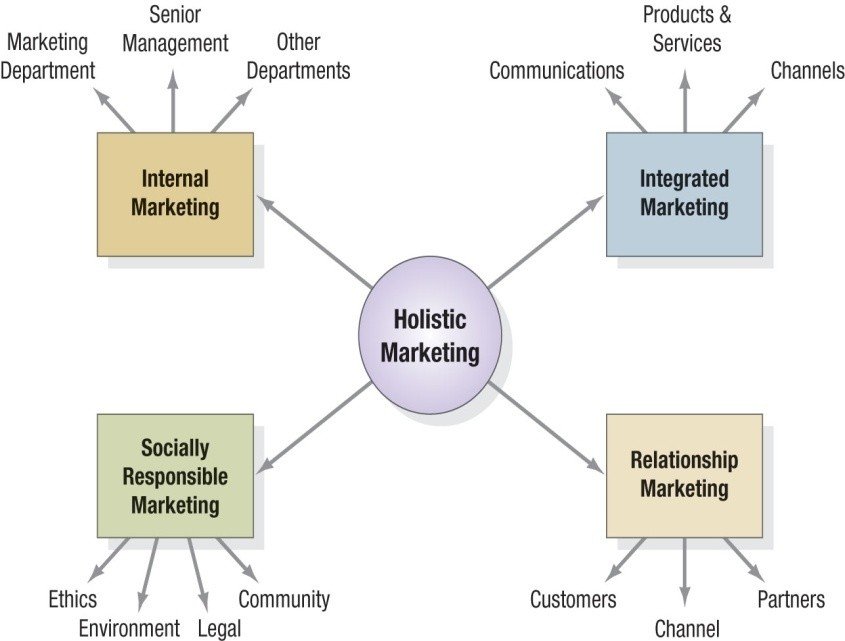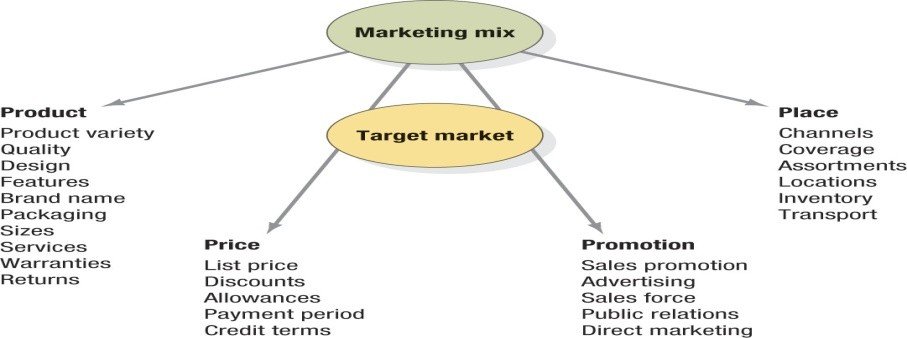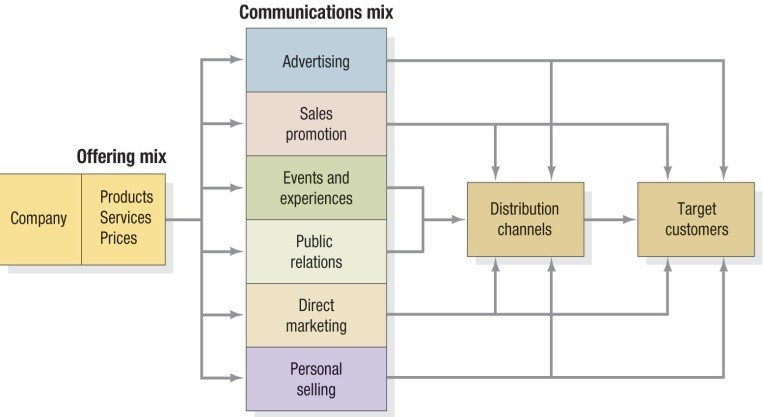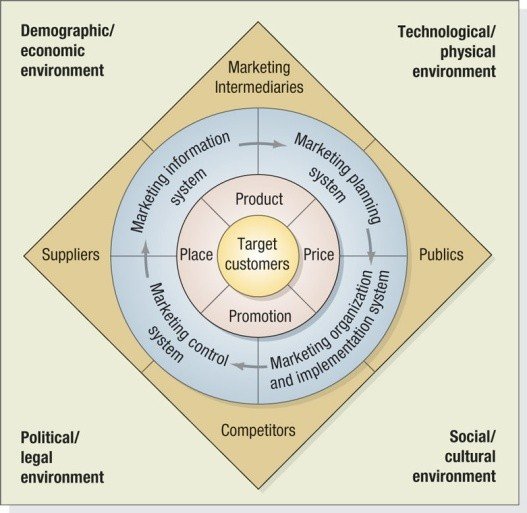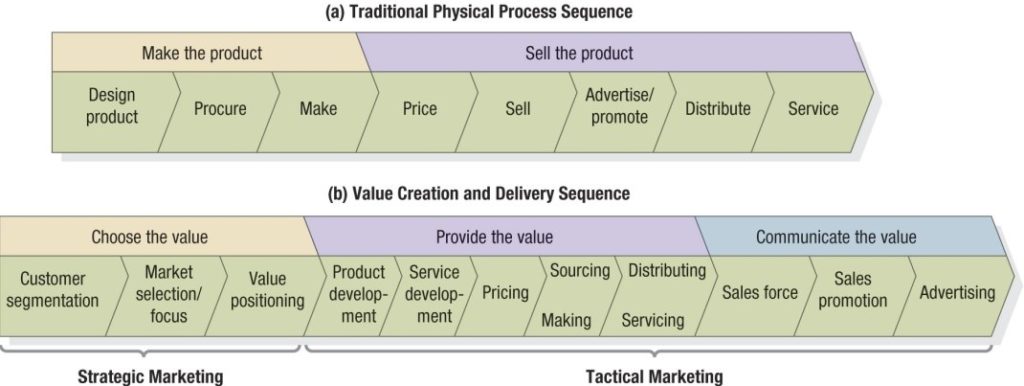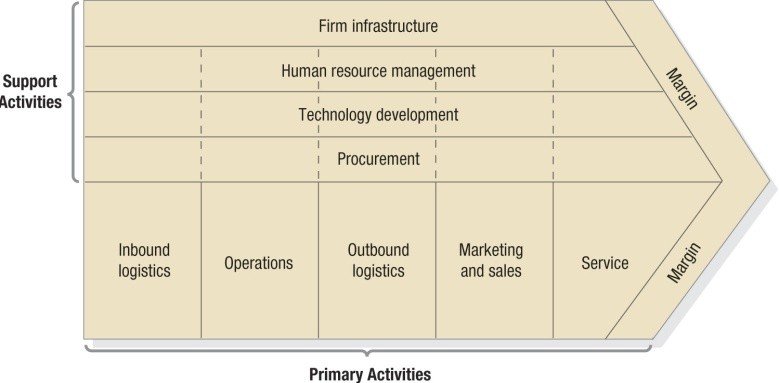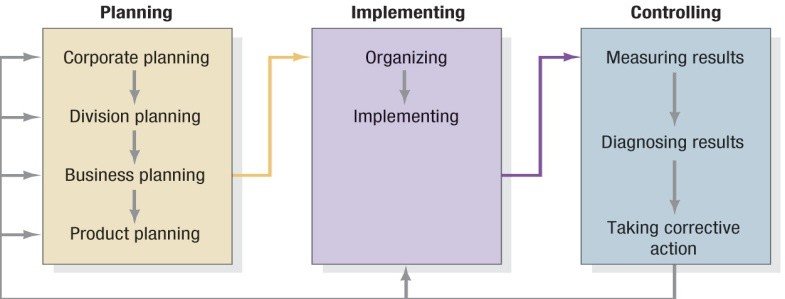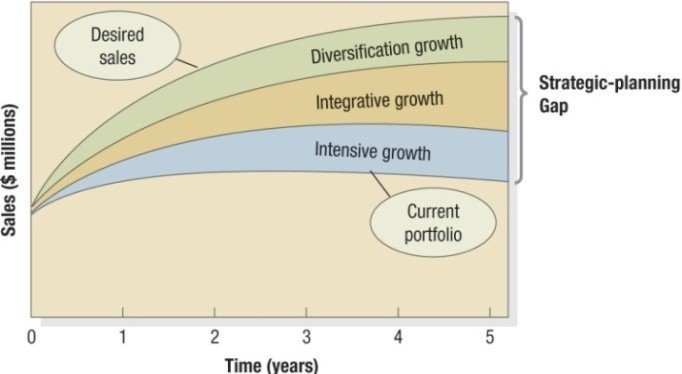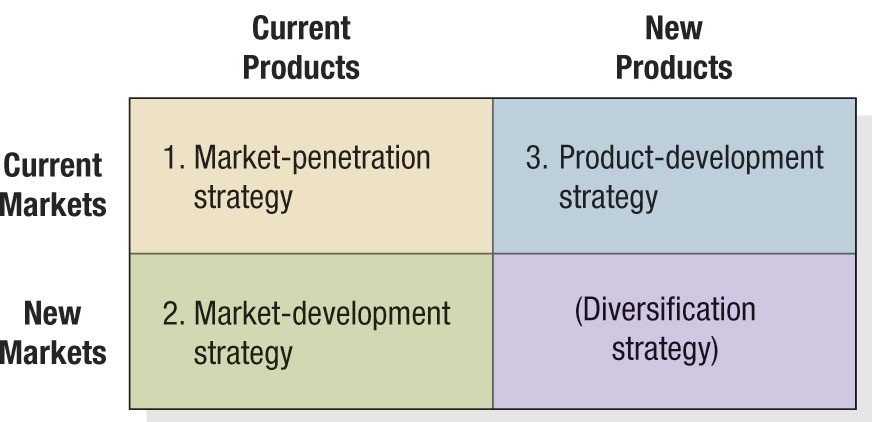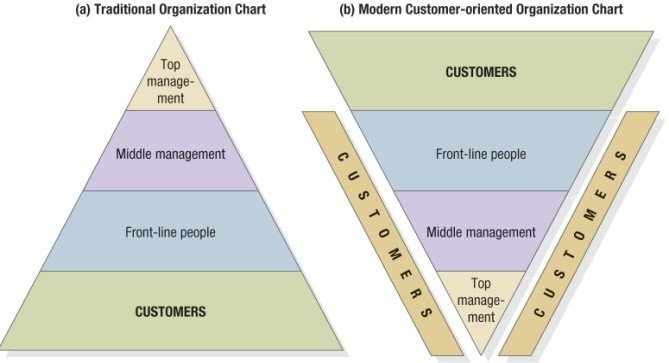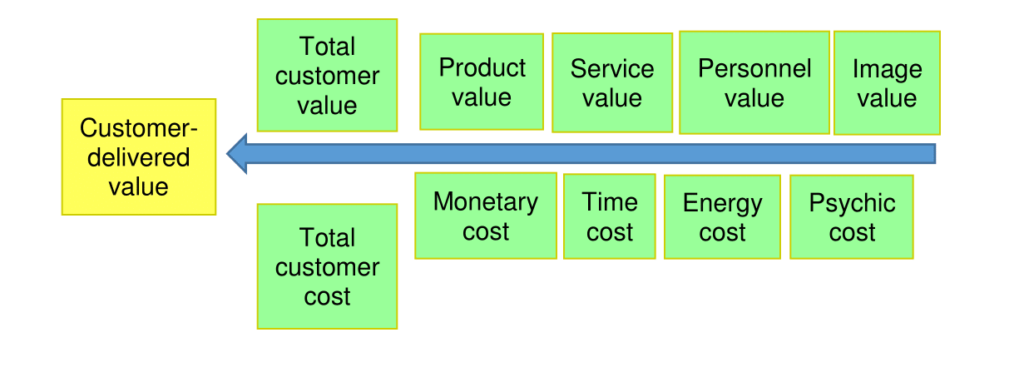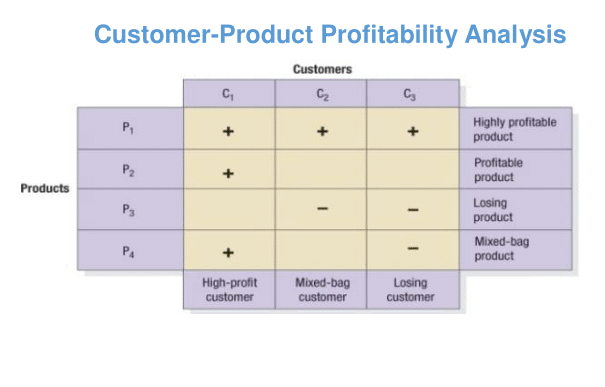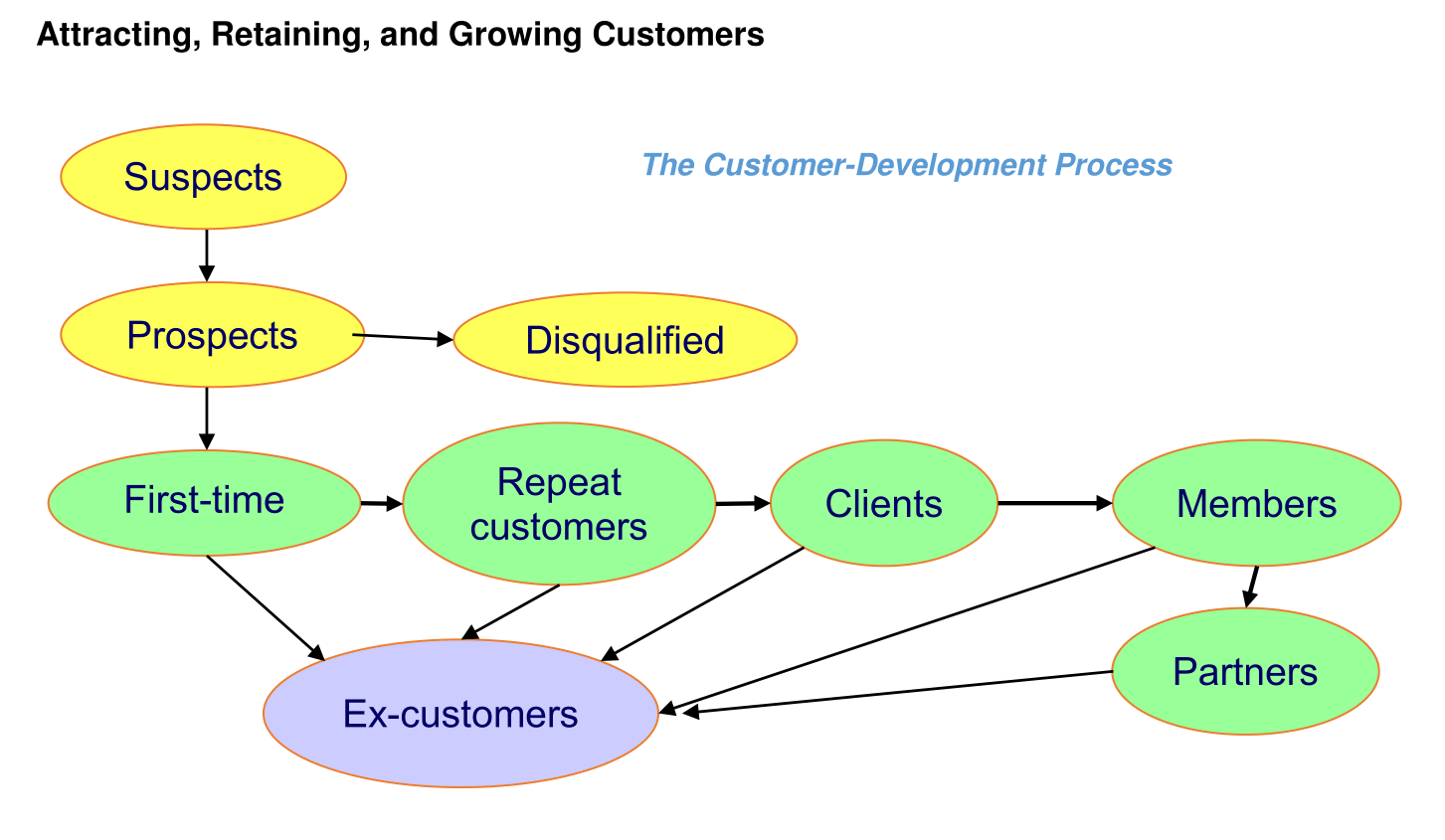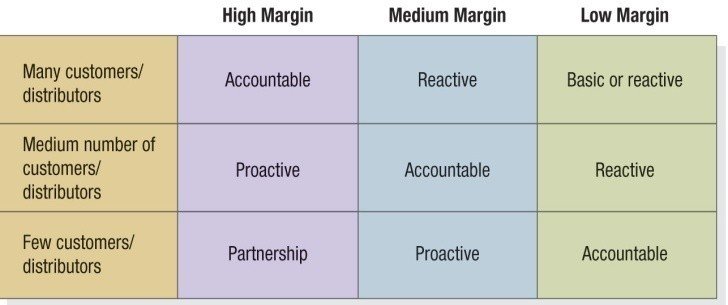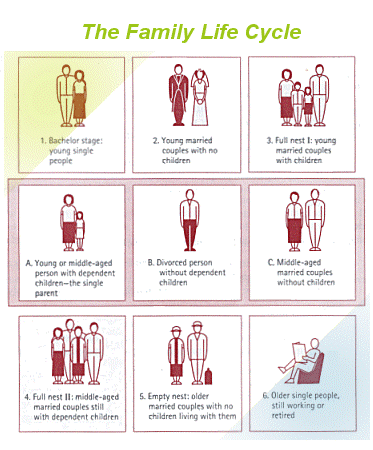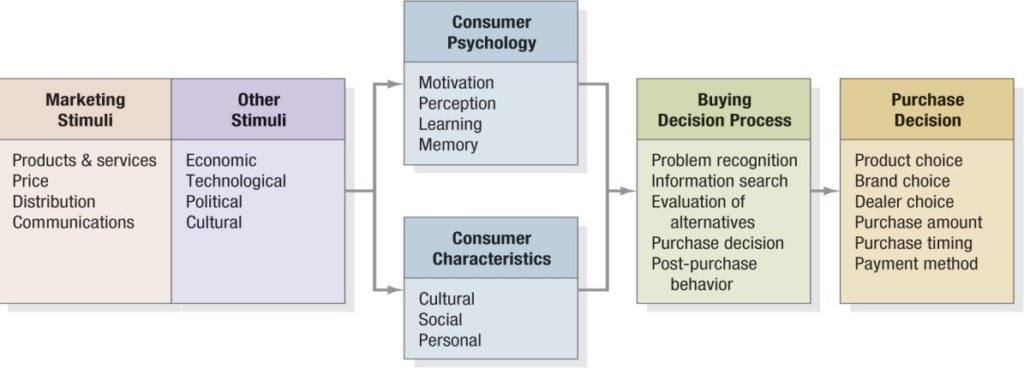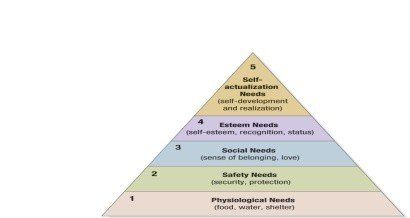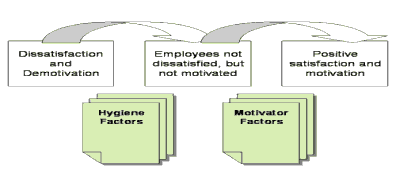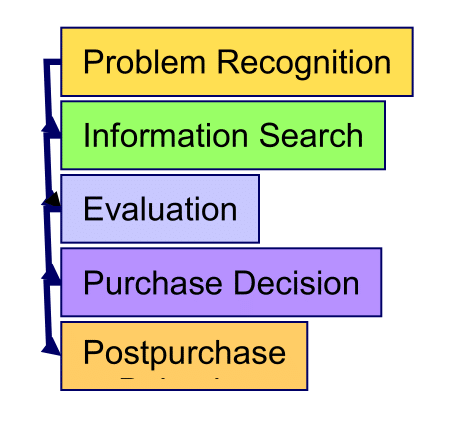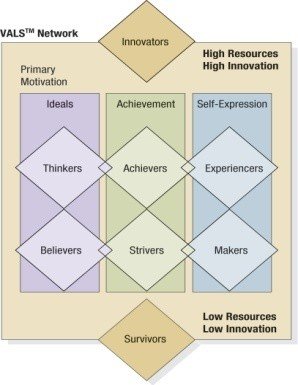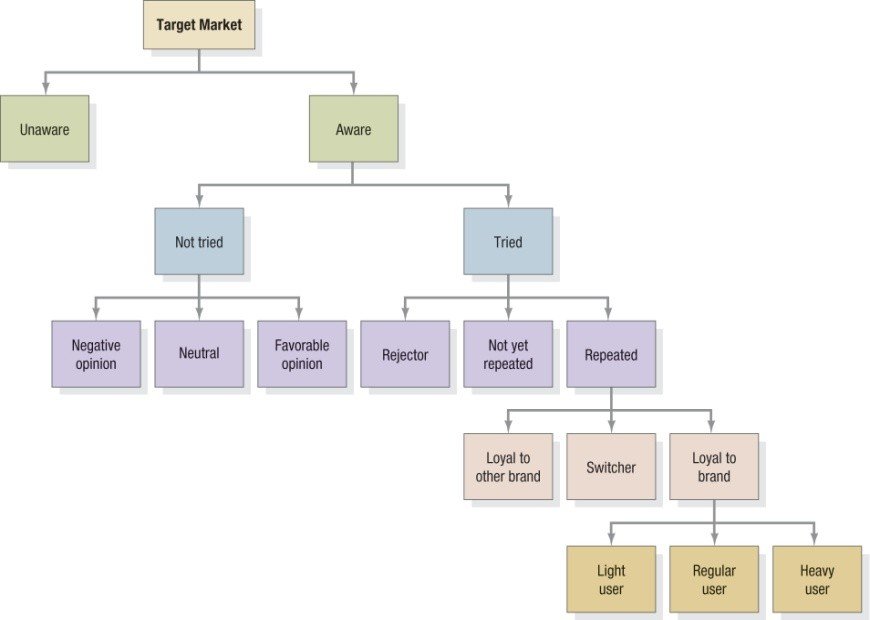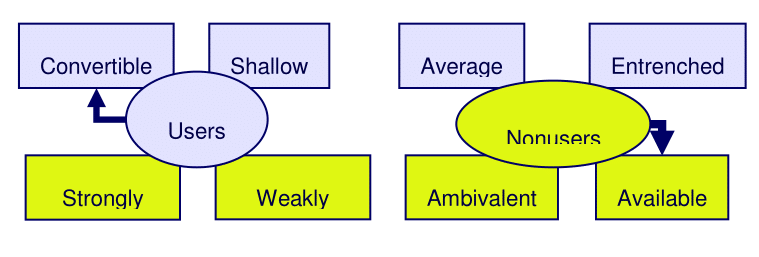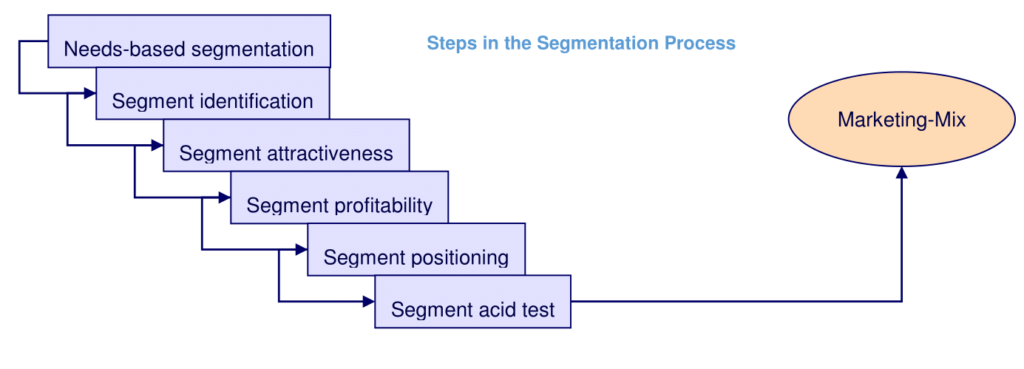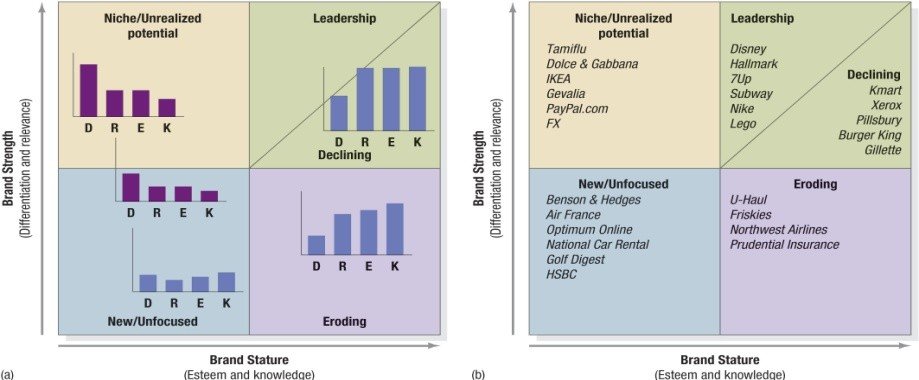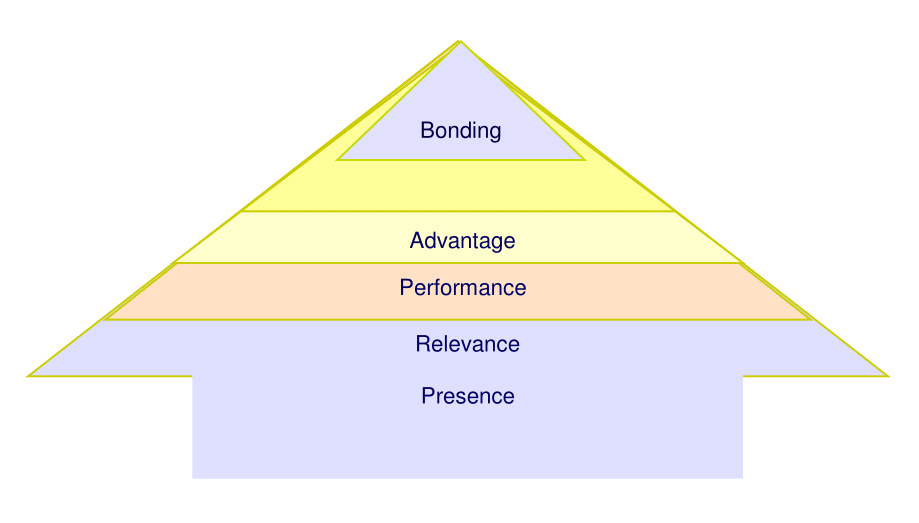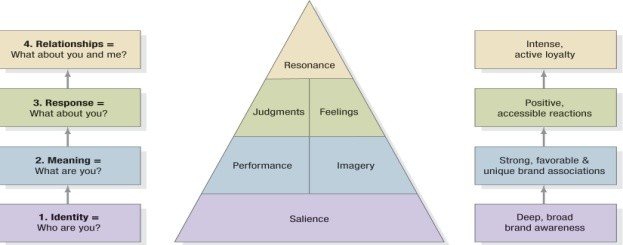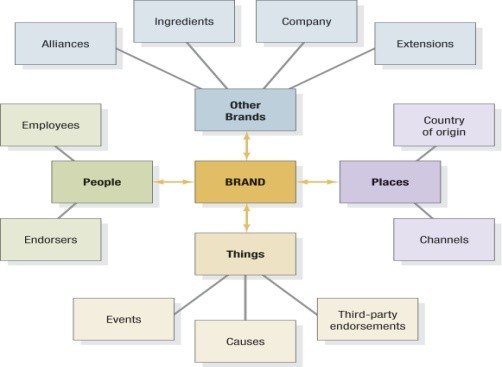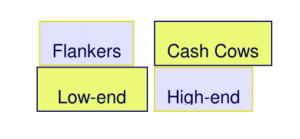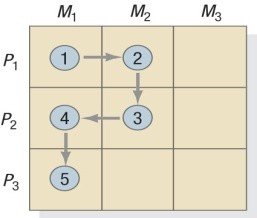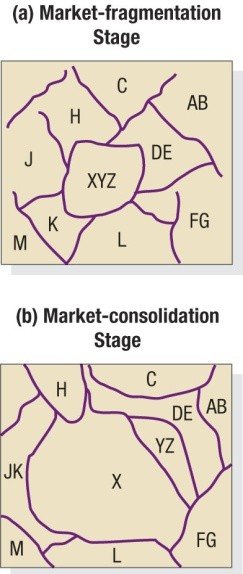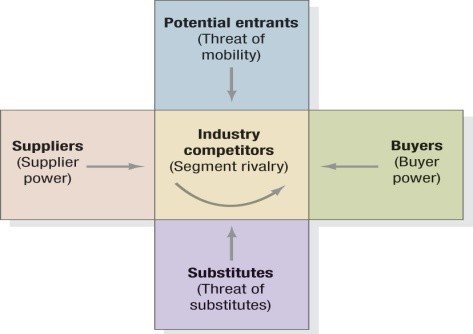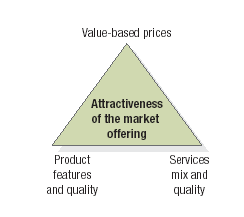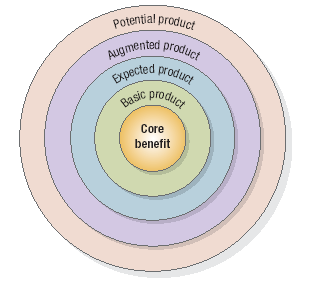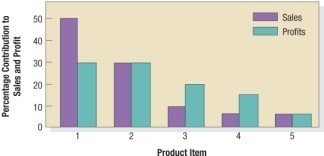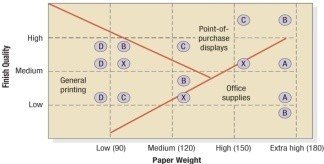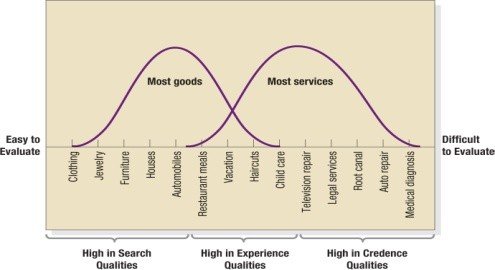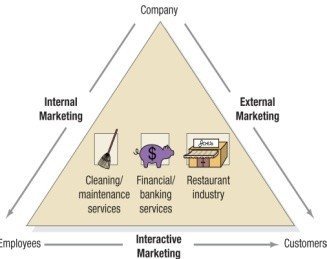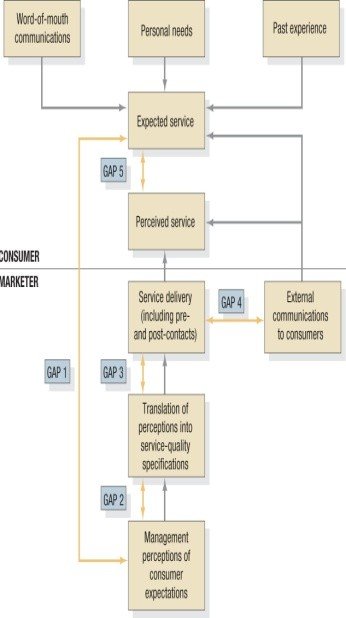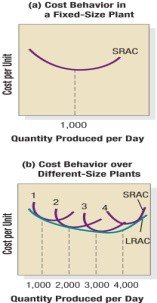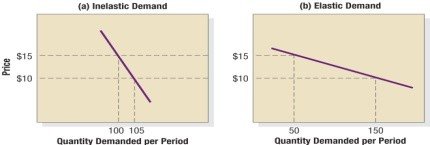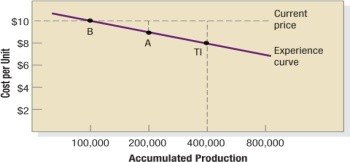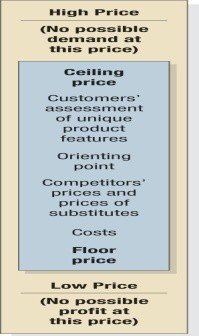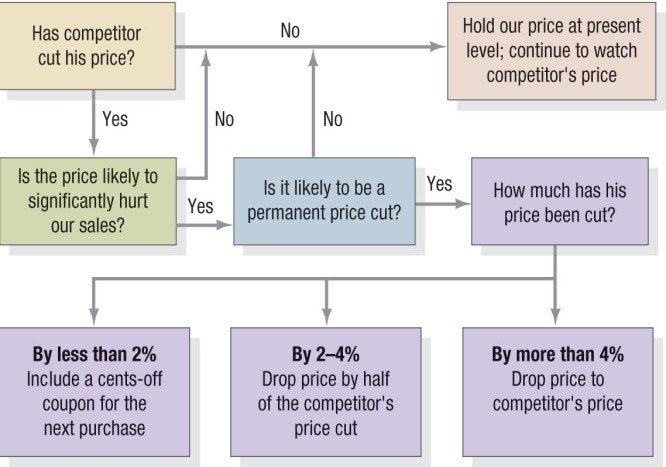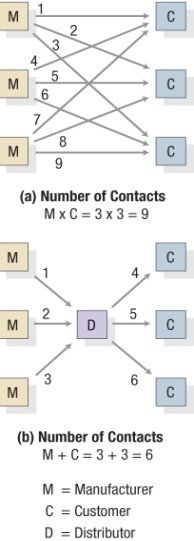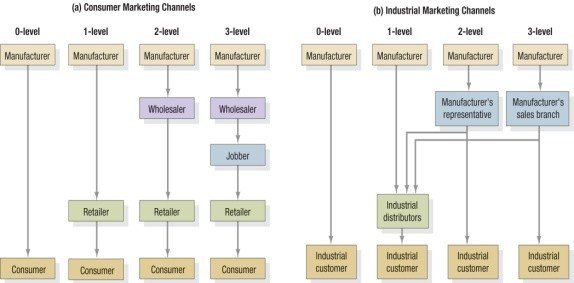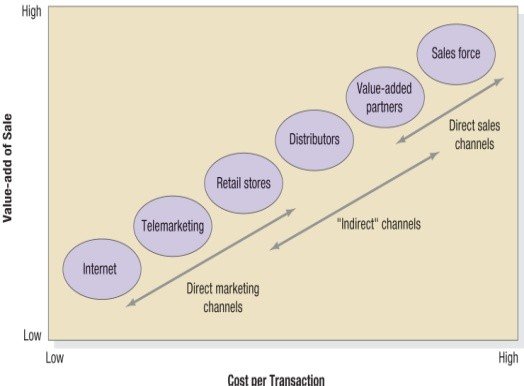Table of Contents
Defining Marketing for the 21st Century
Developing Marketing Strategies and Plans
Gathering Information and Scanning the Environment
Conducting Marketing Research and Forecasting Demand
Creating Customer Value, Satisfaction, and Loyalty
Analyzing Consumer Markets
Analyzing Business Markets
Identifying Market Segments and Targets
Creating Brand Equity
Crafting the Brand Position
Dealing with Competition
Setting Product Strategy
Designing and Managing Services
Developing Pricing Strategies and Programs
Designing and Managing Value Networks and Channels
Managing Retailing, Wholesaling, and Logistics
Additional Slides
Defining Marketing for the 21st Century
The Importance of Marketing
What is Marketing?
It deals with identifying and meeting human and social needs or “meeting needs profitably”. It is an organizational function and a set of processes for creating, communicating, and delivering value to customers and for managing customer relationships in ways that benefit the organization and its stakeholders. Marketing consists of actions undertaken to elicit desired responses from a target audience.
What is Marketing Management?
Is the art and science of choosing target markets and getting, keeping, and growing customers through creating, delivering, and communicating superior customer value or the “the art of selling products”. Peter Drucker said , “Ideally, marketing should result in a customer who is ready to buy.”
Marketing management involves these two important aspects:
- Exchange – the core of marketing; the process of obtaining the desired product form someone by offering something in return
- Transaction – is a trade of values between two or more parties
What is Marketed?
- Goods
- Services (i.e. airlines, hotels, car rental, barbers…)
- Events (concerts, trade shows)
- Experiences (Disney World, customized experiences)
- Persons (celebrity marketing)
- Places (cities, tourist attractions)
- Properties (real estate or financial property – stocks and bonds)
- Organizations (universities, museums, performing arts orgs, non-profit orgs.)
- Information (encyclopedias, magazine)
- Ideas (“Friends Don’t Let Friends Drive Drunk)
Who Markets?
Marketers and Prospects
Marketers are people who seeks a response from another party, called prospects. They are skilled in stimulating demand for a company’s products. Responsible for demand management. Seek to influence the level, timing, and composition of demand to meet the organization’s objectives
8 Possible Demand States:
- Negative demand – Consumers dislike the product and may even pay a price to avoid it
- Nonexistent demand – Consumers may be unaware or uninterested in the product.
- Latent demand – Consumers may share a strong need that cannot be satisfied by an existing product.
- Declining demand – Consumers begin to buy the product less frequently or not at all.
- Irregular demand – Consumer purchases vary on a seasonal, monthly, weekly, daily, or even hourly basis.
- Full demand – Consumers are adequately buying all products put into the marketplace
- Overfull demand – More consumers would like to buy the product than can be satisfied.
- Unwholesome demand – Consumers may be attracted to products that have undesirable social consequences.
Markets – marketers often use the term market to cover various grouping of customers
- Needs markets
- Product markets
- Demographic markets
- Geographic markets
- Voter markets
Key Customer Markets
- Consumer Markets – companies selling mass consumer goods and services spend a great deal of time trying to establish a superior brand image
- Brand strength depends on developing a superior product and packaging, ensuring its availability, and backing it with engaging communication and reliable service
- Business Markets – companies selling business goods and services often face well-trained and well-informed professional buyers who are skilled in evaluating competitive offerings
- Business marketers must demonstrate how their products will help these buyers achieve higher revenue or lower costs
- Global Markets – companies selling goods and services in the global marketplace face additional decisions and challenges
- Which countries to enter; how to enter each country’ how to adapt their product and service features to each country; how to price in different countries’ how to adapt their communication to fit different cultures
- Non-Profit and Governmental Markets
MARKETPLACES, MARKETSPACES, AND METAMARKETS
- Marketplace – physical
- Marketspace – digital
- Metamarket – cluster of complementary products and services that are closely related in the minds of consumers but are spread across a diverse set of industries
- (i.e. automobile – car dealers, financing, insurance, mechanics, spare parts dealers, service shops, auto mags, classified ads, auto sites on internet)
- “marketplace isn’t what it used to be” / How business and marketing are changing:
a. Changing technology
b. Globalization
c. Deregulation
d. Privatization
e. Customer empowerment
f. Customization
g. Heightened competition
h. Industry convergence
i. Retail transformation (growing power of giant retailers and “category killers”)
j. Disintermediation (i.e. in delivery of products and services – amazon, yahoo, eBay, etrade)
Company Orientations Towards the Marketplace
1. The Production Concept
- Consumers will prefer products that are widely available and in inexpensive
- Managers: to concentrate on achieving high production efficiency, low costs, and mass distribution
2. The Product Concept
- Consumers will favor those products that offer the most quality, performance, or innovative features
- Managers: focus on making superior products in improving them over time
3. The Selling Concept
- Consumers and businesses, if left alone, will ordinarily not buy enough of the organization’s products
- Orgs must, therefore, undertake an aggressive selling and promotion efforts
- Practice most aggressively with unsought goods: encyclopedias, insurance, funeral plots
4. The Marketing Concept
- Instead of product-centered, “make-and-sell” philosophy,
- business shifted to a customer-centered, “sense-and-respond” philosophy
- Marketing is finding the right products for your customers
- Focus on the needs of the buyer
- Satisfying the needs of the customer by means of the product and the whole cluster of things associated with creating delivering and finally consuming it
5. The Holistic Marketing Concept
- “everything matters” with marketing – broad, integrated perspective is often necessary
- Four components of Holistic Marketing:
a. Relationship Marketing – building mutually satisfying long-term relationships with key parties
b. Integrated Marketing – devise marketing activities and assemble fully integrated marketing programs to create, communicate, and deliver value for consumers
*marketing activities come in all forms; one ex. Is in terms of marketing mix:
*figure below shows the company preparing an offering mix of products and services, and prices, and utilizing a communications mix:
c. Internal Marketing – ensuring that everyone in the organization embraces appropriate marketing principles, especially senior management
Must take place on two levels:
• Various marketing functions must work together (sales force, advertising, CS, product management, market research)
• Marketing must be embraced by the other departments; they must also “think customer”; marketing must be pervasive throughout the company)
d. Social responsibility marketing – understanding broader concerns and the ethical, environmental, legal, and social context of marketing activities and programs
Fundamental Marketing Concepts, Trends, and Tasks
Core Concepts
NEEDS, WANTS, AND DEMANDS
- Needs: basic human requirements
- Wants: needs become wants when they are directed to specific objects that might satisfy the need
- Demands: wants for specific products backed by an ability to pay
- Marketers do not create needs: Needs preexist marketers. Marketers, along with other societal factors, influence wants.
- “Simply giving customers what they want isn’t enough anymore – to gain an edge companies must help customers learn what they want.”
Five types of needs:
1.) Stated needs 2)Real needs 3)Unstated needs 4)Delight needs 5)Secret needs
TARGET MARKETS, POSITIONING, AND SEGMENTATION
- A marketer can rarely satisfy everyone in a market
- Marketers start by dividing up the market into segments
- Decides which segments present the greatest opportunity – target markets
- For each chosen target market, firm develops a market offering
- Offering is positioned in the minds of the target buyers as delivering some central benefit(s).
- For each chosen target market, firm develops a market offering
- Decides which segments present the greatest opportunity – target markets
- Marketers start by dividing up the market into segments
OFFERING AND BRANDS (value propositions)
- Offering: can be a combination of products, services, information, and experiences
- Brand: an offering from a known source
VALUE AND SATISFACTION
- Offering will be successful if it delivers value and satisfaction to the target buyer.
- Value
- reflects the perceived tangible and intangible benefits and costs to customers
- a central marketing concept; Marketing can be seen as the identification, creation, communication, delivery, and monitoring of customer value
- “customer value triad” – (qsp) value can be seen a primarily a combination of quality, service, and price
- Satisfaction – person’s comparative judgments resulting from a product’s perceived performance in relation to his expectations.
3 KINDS OF MARKETING CHANNELS:
- Communication channels deliver and receive messages from target buyers
- Distribution channels – used to display, sell, or deliver the physical product or service(s) to buyer or user.
- Service channels – used to carry out transactions with potential buyers
SUPPLY CHAIN
- Stretching from raw materials to components to final products that are carried to final buyers
- Represents a value delivery system
COMPETITION
- Includes all the actual and potential rival offerings and substitutes that a buyer might consider
MARKETING ENVIRONMENT
- Task environment – includes the immediate actors involved in producing, distributing, and promoting the offering
- Company, suppliers, distributors, dealers, and target customers
- Broad environment consist of six components:
- Demographic environment
- Economic environment
- Physical environment
- Technological environment
- Political-legal environment
- Social-cultural environment
Factors Influencing Company Marketing Strategy
MARKET PLANNING – consists of:
- analyzing marketing opportunities;
- selecting target markets;
- designing marketing strategies;
- developing marketing programs; and
- managing the marketing effort
14 Shifts in Marketing Management
| FROM | TO |
| 1. Marketing does the marketing | Everyone Does the Marketing |
| 2. Organizing by product units | Organizing by customer segments |
| 3. Making everything | Buying more goods and services from outside |
| 4. Using many suppliers | Working with fewer suppliers in a “partnership” |
| 5. Relying on old market positions | Uncovering new ones |
| 6. Emphasizing tangible assets | Emphasizing intangible assts |
| 7. Building brands through ads | Building brands through performance and integrated communications |
| 8. Attracting customers through stores and salespeople | Making products available online |
| 9. Selling to everyone | Trying to be the best firm serving well-defined target markets |
| 10. Focusing on profitable transactions | Focusing on customer lifetime value |
| 11. Focus on gaining market share | Focus on building customer share |
| 12. Being local | Being “glocal” – both global and local |
| 13. Focusing on the financial scorecard | Focusing on the marketing scorecard |
| 14. Focusing on shareholders | Focusing on stakeholders |
Marketing Management Tasks
- Developing marketing strategies and plans
- Capturing marketing insights
- Connecting with customers
- Building strong brands
- Shaping the market offerings
- Delivering value
- Communicating value
- Creating long-term growth
Developing Marketing Strategies and Plans
Marketing and Customer Value
The Value Delivery Process
- STP (“segmentation, targeting, positioning”) – the essence of strategic marketing
- 3 V’s Approach to Marketing:
- Define the value segment
- Define the value proposition
- Define the value network
The Value Chain
Porter’s Generic Value Chain
- Michael Porter proposed the value chain as a tool for identifying ways to create more customer value
- Every firm is a synthesis of activities performed to design, produce, market, deliver, and support its product
- The firm’s task is to examine its costs and performance in each value-creating activity and to look for ways to improve it
- Benchmark (org costs & performance measures; competitor costs & performance measures)
- Study the “best of class” practices of the world’s best companies
- To be successful, a firm also needs to look for competitive advantages beyond its own operations, into the value chains of suppliers, distributors, and customers
- Study the “best of class” practices of the world’s best companies
Porter’s Generic Value Chain
Core Competencies
- To carry out its core business processes, a company needs resources
- The key then is to own, and nurture the resources and competencies that make up the essence of the business
3 characteristics of Core Competencies:
- Source of competitive advantage
- Has applications in a wide variety of markets
- Difficult for competitors to imitate
- Competitive advantage ultimately derives from how well the company has fitted its core competencies and distinctive capabilities into tightly interlocking “activity systems.”
A Holistic Marketing Orientation and Customer Value
- Value Exploration
- Cognitive space: reflects existing and latent needs; need for participation, stability, freedom, change
- Competency space: in terms of breadth (broad vs. focused scope of business) and depth (physical vs. knowledge-based cap.)
- Resource space: involves horizontal partnerships and vertical partnerships
- Value Creation
- Value Delivery
The Central Role of Strategic Planning
- Strategic planning calls for action in 3 areas:
- Managing a company’s businesses as an investment portfolio
- Assessing each business’s strength by considering the market’s growth rate and the company’s position and fit in that market
- Establishing a strategy (develop a game plan for its long-run objectives)
- Marketing plan: central instrument for directing and coordinating the marketing effort
- Strategic marketing plan
- lays out the target markets and the value proposition that will be offered, based on an analysis of the best market opportunities
- Tactical marketing plan
- specifies the marketing tactics, including product features, promotion, merchandising, pricing, sales channels, and service
- Strategic marketing plan
- Marketing plan: central instrument for directing and coordinating the marketing effort
Corporate and Division Strategic Planning
The Strategic Planning, Implementation, and Control Processes
- Defining the Corporate Mission
- Mission statements –
- Provides employees with a shared sense of purpose, direction, and opportunity
- What is our business? Who is the customer? What is of value to customer? What will our business be? What should our business be? (Peter Drucker)
- Mission statements –
- Defining the Business
- Business can be defined in terms of 3 dimensions: customer groups, customer needs, and technology
- SBUs: The purpose of identifying the company’s strategic business units is to develop separate strategies and assign appropriate funding
- Assessing Growth Opportunities
- Identify opportunities to achieve further growth within current businesses (intensive opportunities)
- Identify opportunities to build or acquire businesses that are related to current businesses (integrative)
- Identify opportunities to add attractive businesses that are unrelated to current businesses (diversification opportunities)
- Integrative Growth – a business’s sales and profits may be increased through backward, forward, or horizontal integration within its industry
- Diversification Growth – makes sense when good opportunities can be found outside the present businesses
- Concentric strategy – seek new products that have technological or marketing synergies with existing product lines
- Horizontal strategy – search new products that could appeal to current customers even though the new products are technologically unrelated to its current product line
- Conglomerate strategy – seek now businesses that have no relationship to its current technology, products, or markets
- Downsizing and Divesting older business
Business Unit Strategic Planning
- Business Mission
- SWOT analysis
- Goal formulation
- Strategy Formulation
- Porter’s Generic Strategies:
- Overall cost leadership
- Differentiation
- Focus
- Strategic Alliances
- Marketing Alliance:
- Product or service alliances
- Promotional alliances
- Logistics alliances
- Pricing collaborations
- Program Formulation and Implementation
- McKinsey & Company’s 7s in Successful Business Practice:
- Strategy, structure, and systems (“hardware” of success)
- Style, skills, staff, and shared values (“software” of success)
- Marketing Alliance:
Feedback and Control – track the results and monitor new developments
Product Planning: The Nature and Contents of a Marketing Plan
Contents of a Marketing Plan (sample):
- Executive summary and table of contents
- Situational analysis
- Market Summary
- Target Markets
- Market Demographics
- Geographic
- Demographic
- Behavior Factors
- Market Needs
- Market Trends
- Market Growth
- SWOT Analysis
- Competition
- Product Offering
- Keys to Success
- Critical Issues
- Market Summary
- Marketing strategy
- Mission
- Marketing objective
- Financial objective
- Target markets
- Positioning
- Strategies
- Marketing Mix
- Marketing Research
- Financial projections
- Break-even Analysis
- Sales Forecast
- Expense Forecast
- Implementation controls
- Controls
- Implementation
- Marketing Organization
- Contingency Planning
Gathering Information and Scanning the Environment
Components of a Modern Marketing Information System
- Marketing Information Systems (MIS)
- Consists of people, equipment, and procedures to gather, sort, analyze, evaluate, and distribute needed, timely and accurate information to marketing decision-makers
- Components:
- Internal company records, marketing intelligence activities
- Marketing research
- MIS should be a cross between what managers think they need, what managers really need, and what is economically feasible
Internal Records and Marketing Intelligence
- The Order-to-Payment Cycle
- Heart of the internal records system
- Sales Information Systems
- Companies must carefully interpret the sales data so as not to get the wrong signals
- Databases, Data Warehousing, and Data Mining
- The Marketing Intelligence System
- Internal records system supplies data; marketing intelligence system supplies happenings data
- A set of procedures and sources managers use to obtain everyday information about developments in the marketing environment
Analyzing the Macroenvironment
- Needs and Trends
- Fad: “unpredictable, short-lived, and without social, economic, and political significance.”
- Trend: a direction or sequence of events that has some momentum and durability
- Reveals the shape of the future and provides many opportunities
- Megatrend: “large social, economic, political and technological changes that are slow to form, and once in place, they influence us for some time – between seven and ten years or longer.”
- A new product or marketing program is likely to be more successful if it is in line with strong trends rather than opposed to them, but detecting a new market opportunity does not guarantee success, even if it is technically feasible.
- Identifying the Major Forces
- Represent “noncontrollables,” which company must monitor and to which it must respond
6 Major Forces:
- Demographic
- Economic
- Social-cultural
- Natural
- Technological
- Political-legal
1. Demographic Environment
- Demographic trends are highly reliable for the short and intermediate run
- Worldwide Population Growth
- A growing population does not mean growing markets unless these markets have sufficient purchasing power
- Example: China’s one-child policy – consequence: “little emperors” or “six-pocket syndrome”
- A growing population does not mean growing markets unless these markets have sufficient purchasing power
- Population Age Mix
- The growing trend toward an aging population
- For marketers, the most populous age groups shape the marketing environment (US: baby boomers, Gen. X, Gen. Y)
- Ethnic and Other Markets
- Japan mostly Japanese; US – “salad bowl” society”
- Ethnic groups have certain specific wants and buying habits
- Must be careful not to overgeneralize about ethnic groups
- Within each ethnic group are consumers who are quite different from each other
- Diversity goes beyond ethnic and racial markets
- Educational Groups
- 5 Groups: illiterates, high school dropouts, hs diplomas, college degrees, and professional degrees
- Household Patterns
- “traditional household” – consists of a husband, wife, and children
- “diverse” or “nontraditional” – single live-alones, adult live-together of one or both sexes, single-parent families, childless married couples, and empty-nesters
- Consider the special needs of nontraditional households, because they are now growing more rapidly than traditional households
- Geographical Shifts in Population
- Period of migratory movements between and within countries
- Location makes a difference in goods and service preference
2. Economic Environment
- Income distribution
- Marketers often distinguish countries with 5 income-distribution patterns:
- Very low incomes
- Mostly low incomes
- Very low, very high incomes
- Low, medium, high incomes
- Mostly medium incomes
- Marketers often distinguish countries with 5 income-distribution patterns:
- Savings, Debt, and Credit Availability (affects consumer expenditures)
- Outsourcing and Free Trade
3. Social-Cultural Environment
- Society shapes the beliefs, values, and norms that largely define the tastes and preference
- Views of themselves
- Views of others
- Views of organizations
- Views of society
- Views of nature (harmony or mastery over nature)
- Views of universe
- High persistence of core cultural values
- Marketers have some chance of changing secondary values but little chance of changing core values
- Existence of Subcultures
- Groups with shared values emerging from their special life experiences or circumstances
- Shifts of Secondary Cultural Values through time
- Cultural swings do take place (i.e. hippies, the Beatles…)
4. Natural Environment (4 trends in the natural environment)
- Shortage of Raw Materials
- Increased Energy Costs
- Anti-Pollution Pressures
- Changing Role of Governments
5. Technological Environment (Every new technology is a force for “creative destruction.”)
- Accelerating pace of change
- Unlimited opportunities for innovation
- Varying R&D Budgets
- Increased regulation of technological change
6. Political-legal Environment
- Increase in business legislation
- Growth of special-interest groups
Conducting Marketing Research and Forecasting Demand
The Market Research System
- The systematic design, collection, analysis, and reporting of data and findings relevant to a specific marketing situation facing the company
- Types of Marketing Research Firms:
- Syndicated-service firms
- Custom marketing research firms
- Specialty-line marketing research firms
The Marketing Research Process
- Research approaches (primary data can be collected in 5 main ways)
- Observational research
- Focus group research
- Survey research
- Behavioral data
- Experimental research
- Research instruments
- Questionnaires
- Qualitative Measures – for gauging consumer opinion because consumer actions do not always match their answers to survey questions
- Shadowing
- Behavior mapping
- Consumer journey
- Camera Journals
- Extreme user interview
- Storytelling
- Unfocus groups
- Mechanical Devices (example: galvanometers and tachistoscope, eye cameras, audiometers, gps)
- Sampling Plan (sampling unit? Sampling size? Sampling procedure?)
- Contact Methods
- Mail questionnaires
- Telephone interview
- Personal interview
- Online interview
- Characteristics of Good Marketing Research:
- Scientific method
- Research creativity
- Multiple methods
- Interdependence
- Value and cost of information
- Healthy skepticism
- Ethical marketing
Measuring Marketing Productivity
Marketing Metrics
| External | Internal |
| Awareness Market share Relative price Number of complaints Customer satisfaction | Awareness of goals Commitment to goals Active support Resource adequacy Staffing |
Measuring Marketing Plan Performance
- Sales analysis
- Market share analysis
- Marketing expense-to-sales analysis
- Financial analysis
- Marketing-profitability analysis
- Determining corrective action
- Direct vs Full Costing
- Marketing-Mix Modeling – analyze data from a variety of sources, such as retailer scanner data, company shipment data, pricing, media, and promotion spending data, to understand more precisely the effect of specific marketing activities
Forecasting and Demand measurement
The Measures of Market Demand
- Potential market
- Available market
- Target market
- Penetrated market
A Vocabulary of Demand Measurement
- Market Demand
- The total volume that would be bought by a defined customer group in a defined geographical area in a defined time period in a defined marketing environment under a defined marketing program
- Market Forecast
- Market Potential
- The limit approached by market demand as industry marketing expenditures approach infinity for a given marketing environment
- Company Demand
- The company’s estimated share of market demand at alternative levels of company marketing effort in a given time period
- Company Sales Forecast
- Expected level of company sales based on a chosen marketing plan and an assumed marketing environment
- Company Sales Potential
- The sales limit approached by company demand as company marketing effort increases relative to that of competitors
Estimating Current Demand
- Total Market potential – the maximum amount of sales that might be available to all the firms in an industry during a given period, under a given level of industry marketing effort and environmental condition
- Area Market Potential
- Market-Buildup Method
- Multiple-Factor Index Method
- Industry sales and Market Sales
Estimating Future Demand
- Survey of buyers’ intentions (forecasting, purchase probability scale)
- Composite of SalesForce Opinions
- Expert Opinion
- Past-Sales Analysis
- Market-test method
Creating Customer Value, Satisfaction, and Loyalty
Customer Perceived Value
- Customers tend to be value-maximizers, within the bounds of search costs and limited knowledge, mobility, and income
- Determinants of Customer-Delivered Value:
- Customer perceived value (CPV) – difference between the prospective customer’s evaluation of all the benefits and all the costs of an offering and the perceived alternatives
- Total Customer value –perceived monetary value of all bundle of economic, functional, and psychological benefits customers expect from a given market offering
- Total customer cost – bundle of costs customers expect to incur in evaluating, obtaining, using and disposing of the given market offering, including monetary, time, energy, and psychic costs.
- Customer perceived value is thus based on the difference between what the customer gets and what he or she gives for different possible choices.
- The marketer can increase the value of the customer offering by some combination of raising functional or emotional benefits and/or reducing one or more of the various types of costs
Delivering High Customer Value
The key to generating high customer loyalty is to deliver high customer value
- Loyalty – “a deeply held commitment to re-buy or re-patronize a preferred product or service in the future despite situational influences and marketing efforts having the potential to cause switching behavior”
- Value proposition – whole cluster of benefits the company promises to deliver
- Value–delivery system – includes all the experiences the customer will have on the way to obtaining and using the offering
Total Customer Satisfaction
- Ultimately, the company must operate on the philosophy that it is trying to deliver a high level of customer satisfaction subject to delivering acceptable levels of satisfaction to the other stakeholders, given its total resources.
- Customer Expectations – a customer’s decision to be loyal or to defect is the sum of many small encounters with the company
Measuring Satisfaction
- One key to customer retention is customer satisfaction
- High satisfaction, or delight, creates an emotional bond with the brand or company, not just a rational preference.
- Some methods used to measure customer satisfaction: Periodic surveys, customer loss rate, mystery shoppers
Product and Service Quality
- Satisfaction will also depend on product and service quality.
- Quality: the totality of features and characteristics of a product or service that bear on its ability to satisfy stated or implied needs (customer-centered definition)
- Seller has delivered quality whenever the seller’s product or service meets or exceeds the customers’ expectation
- Conformance quality
- Performance quality
- Total quality is the key to value creation and customer satisfaction
Total Quality Management (TQM)
- An organization-wide approach to continuously improving the quality of all the organization’s processes, products, and services.
- Higher levels of quality result in higher levels of customer satisfaction, which support higher prices and (often) lower costs.
- Studies have shown a high correlation between relative product quality and company profitability.
Maximizing Customer Lifetime Value
- Ultimately, marketing is the art of attracting and keeping profitable customers
- 20-80 rule: the top 20% of the customers may generate as much as 80% of the company’s profits
Customer-Product Profitability Analysis
Customer Profitability
- Profitable Customer – a person, household, or company that over time yields a lifetime revenue stream that exceeds by an acceptable amount the company’s cost stream of attracting, selling, and servicing that customer
- Customer profitability analysis (CPA)
- The company estimates all revenue coming from the customer, less all costs
- Marketers must segment customers into those worth pursuing versus those potentially less lucrative customers that should receive less attention if any at all
- Competitive Advantage – company’s ability to perform in one or more ways that competitors cannot or will not match
- Leverageable advantage – on that a company can use as a springboard to new advantages
- Any competitive advantage must be seen by customers as a customer advantage
Customer-Product Profitability Analysis
Measuring Customer Lifetime Value
- Customer Lifetime Value (CLV) – the net present value of the stream of future profits expected over the customer’s lifetime purchases
Customer Equity – the total of the discounted lifetime values of all of the firm’s customers; the more loyal the customer, the higher the customer equity
- 3 Drivers of Customer Equity:
- Value equity – customer’s objective assessment of the utility of an offering based on perceptions of its benefits relative to its costs
- Brand equity – customer’s subjective and intangible assessment of the brand, above and beyond its objectively perceived value
- Relationship equity – customer’s tendency to stick with the brand, above and beyond objective and subjective assessments of its worth
- Customer equity notions can be extended
- Relational equity of the firm – the cumulative value of the firm’s network of relationships with its customer, partners, suppliers, employees, and investors.
Cultivating Customer Relationships
- Maximizing customer value means cultivating long-term customer relationships
- Companies are now moving away from wasteful mass marketing to more precision marketing designed to build strong customer relationships
- Mass customization – the ability of a company to meet each customer’s requirements – to prepare on a mass basis individually designed products, services, programs, and communications
Customer Relationship Management (CRM) – the process of managing detailed information about individual customers and carefully managing all customer “touchpoints” (any occasion on which a customer encounters the brand and product) to maximize customer loyalty
- Identify prospects and customers
- Differentiate customers by needs and value to company
- Interact to improve knowledge
- Customize for each customer
Attracting, Retaining, and Growing Customers
The Customer-Development Process
- The challenge is to produce delighted and loyal customers
- 2 main ways to strengthen customer retention:
- Erect high switching barriers
- Deliver high customer satisfaction
- 96% of dissatisfied customers don’t complain; they just stop buying
- Market Dynamics:
- Permanent Capture Markets – once a customer, always a customer
- Simple Retention Markets – customers can permanently be lost after each period
- Customer Migration Markets – Customers can leave and come back
Building Loyalty
- 5 different levels of investment in customer relationship building (see figure):
Basic marketing; Reactive marketing; Accountable; Proactive; Partnership
Levels of Relationship Marketing
Reducing Customer Defection
Levels of Relationship Marketing
- Define and measure retention rate.
- Distinguish causes of customer attrition.
- Estimate profit loss associated with loss of customers.
- Assess cost to reduce defection rate.
- Gather customer feedback.
Forming Strong Customer Bonds
- Retention building approaches:
- Adding Financial Benefits
- Adding Social Benefits
- Adding Structural Ties
Customer Databases and Database Marketing
- Customer database – an organized collection of comprehensive information about individual customers or prospects that is current, accessible, and actionable for such marketing purposes as lead generation, lead qualification, sale of a product or service, or maintenance of customer relationships
- Customer mailing list, business database
- Database marketing – the process of building, maintaining, and using customer databases and other databases (products, suppliers, resellers) for the purpose of contacting, transacting, and building customer relationships
- Data warehouse – data collected by the company and organized
- Datamining – useful information about individuals, trends, and segments from the mass of data are extracted my marketing statisticians
- Use the databases to:
- Identify prospects
- Decide which customers should receive a particular offer
- Deepen customer loyalty
- Reactivate customer purchases
- Avoid serious customer mistakes
- Downside of Database Marketing and CRM
- Building and maintain a customer database requires a large in vestment
- Difficult to collect the right data, especially to capture all the occasions of company interaction with individual customers
- Building a customer database would not be worthwhile in where:
- Product is once-in-a-lifetime purchase
- Customers show little loyalty to brand
- Unit sale is very small
- Cost of gathering information is too high
- Difficulty of getting everyone in the company to be customer-oriented and to use the available information
- Not all customers want a relationship with the company, and they may resent knowing that the company has collected that much personal information about them
- Assumptions behind CRM may not always hold true
- It may not be the case that it costs less to serve more loyal customers
- Building and maintain a customer database requires a large in vestment
Analyzing Consumer Markets
What Influences Consumer Behavior?
- Cultural Factors
- Culture – fundamental determinant of a person’s wants and behavior
- Subcultures – provide more specific identification and socialization for their members
- Social classes – a form of human societies exhibiting social stratification
- Tend to behave more alike than persons from two different social classes
- Persons are perceived as occupying inferior or superior positions according to social class
- Indicated by a cluster of variables (i.e. occupation, income, education, value orientation – rather than by any single variable
- Individuals can move up or down the social-class ladder during their lifetimes
- Social Factors
- Reference Groups – consist of all the groups that have direct (face-to-face) or indirect influence on his/her attitudes or behavior
- Membership group – groups having direct influence
- Primary groups (such as family, friends, neighbors, co-workers) – those with whom the person interacts fairly continuously and informally
- Secondary groups (such as religious, professional, and trade-union groups) – tend to be more formal and require less continuous interaction
- People are significantly influenced by their reference groups in at least 3 ways:
- Reference groups exposes an individual to new behaviors and lifestyles, and
- influence attitudes and self-concept
- create pressures for conformity that may affect actual product and brand choices
- People are also influenced by groups to which they do not belong:
- Aspirational group – those a person hopes to join
- Dissociative groups – those whose values or behavior an individual rejects
- Manufactures of products and brands where group influence is strong must determine how to reach and influence opinion leaders in these reference groups
- Membership group – groups having direct influence
- Family – most important consumer buying organization in society
- Family of orientation: parent and siblings
- Family of procreation: one’s spouse and children
- Roles and Statuses
- Role – consists of the activities a person is expected to perform
- Status – Each role carries a status
- People choose products that reflect and communicate their role and actual or desired status in society (i.e. status symbol potential of products and brands)
- Reference Groups – consist of all the groups that have direct (face-to-face) or indirect influence on his/her attitudes or behavior
- Personal Factors (have direct impact on consumer behavior)
- Age and Stage in the Life Cycle
- Taste in food, clothes, furniture, and recreation is often age related
- Consumption is also shaped by the family life cycle and the number, age, and gender of people in the household at any point in time
- Psychological life-cycle stages
- Adults experience certain “passages” or “transformations” as they go through life
- Age and Stage in the Life Cycle
- Consider also Critical Life Events or Transitions – marriage, childbirth, illness, relocation, divorce, career change, widowhood – as giving rise to new needs
- Occupation and Economic Circumstances
- i.e. design different product for brand managers, engineers, layers, and physicians
- Product choice is greatly affected by economic circumstances: spendable income, savings and assts, debts, borrowing power, attitudes toward spending and saving
- Personality and Self-concept
- Personality – a set of distinguishing human psychological traits that lead to relatively consistent and enduring responses to environmental stimuli
- Often described in terms of self-confidence, dominance, autonomy, deference, sociability, defensiveness, and adaptability
- Brand Personality – specific mix of human traits that may be attributed to a particular brand
- Sincerity; excitement; competence; sophistication; ruggedness
- Implication: these brands will attract persons who are high on the same personality traits
- Personality – a set of distinguishing human psychological traits that lead to relatively consistent and enduring responses to environmental stimuli
- Lifestyles and Values
- Lifestyle – person’s pattern of living in the world as expressed in activities, interests, and opinions
- Shaped partly by whether consumers are money-constrained or time-constrained
- Core values – the belief system that underlie consumer attitudes and behaviors
- Go much deeper than behavior or attitude; determine at a basic level, people’s choices and desires over the long term
- Occupation and Economic Circumstances
Key Psychological Processes
Model of Consumer Behavior (stimulus-response model)
4 Key Psychological Processes:
Motivation
- A person has many needs at any given time:
- Biogenic – arise from physiological state of tension such as hunger, thirst, or discomfort
- Psychogenic – arise from psychological states of tension such as need for recognition, esteem, or belonging
- Need becomes a motive when it is aroused to a sufficient level of intensity
- Motive – a need that is sufficiently pressing to drive the person to act
- Maslow’s Hierarchy of Needs – human needs are arranged from the most pressing to the least pressing. People will try to satisfy their most important needs first
- Sigmund Freud’s Theory – assumed that the psychological forces shaping people’s behavior are largely unconscious, and that a person cannot fully understand his or her own motivations
- Herzberg’s Two-Factor Theory – the absences of dissatisfiers is not enough; satisfiers must be present to motivate a purchase
Perception – the process by which an individual selects, organizes and interprets information inputs to create a meaningful picture of the world
- It is perceptions that will affect consumers’ actual behavior
- 3 Perceptual processes:
- Selective attention
- Selective Distortion
- Selective Retention
- Subliminal Perception – i.e. use of subliminal messages in ads and packages
Learning – changes in an individual’s behavior arising from experience
- Learning theorist believe that learning is produced through the interplay of drives, stimuli, cues, responses, and reinforcement
- Drive: strong internal stimulus impelling action
- Cues: minor stimuli that determine when, where, and how a person responds
- Discrimination: a countertendency to generalization; person has learned to recognize differences in sets of similar stimuli and can adjust responses accordingly
Memory
- Short-term memory (STM): temporary repository of information
- Long-term memory (LTM): permanent repository
- Associative network memory model
- Consumer brand knowledge in memory can be conceptualized as consisting of a brand node in memory with a variety of linked associations
- Brand association – consist of all brand-related thoughts, feelings, perceptions, images, experiences, beliefs, attitudes as so on that become linked to the brand node
- Memory Processes:
- Encoding – refers to how and where information gets into memory
- The more attention placed on the meaning of information during encoding, the stronger the resulting association in the memory will be
- Retrieval – refers to how information gets out of memory
- Successful recall of brand information by consumers does not depend only on the initial strength of that memory; 3 Factors are important:
- The presence of other product information in memory can produce interference effects
- The longer the time delay, the weaker the association
- Information may be “available” in memory but may not be “accessible” without the proper retrieval cues or reminders
- Successful recall of brand information by consumers does not depend only on the initial strength of that memory; 3 Factors are important:
- Encoding – refers to how and where information gets into memory
The Buying Decision Process: The Five-Stage Model
1. Problem Recognition
- Buying process start when buyer recognizes a problem or need (can be triggered by internal or external stimuli)
2. Information Search
- An aroused consumer will be inclined to search for more information
- Heightened attention – person simply becomes
more receptive to information about a product
- Active information search
- Which major information sources to which the consumer will turn and relative influence each will have on subsequent purchase decision:
- Personal
- Commercial
- Public
- Experiential
- The most effective information often comes from personal sources or public sources that are independent authorities
- Through gathering information, consumer learns about competing brands and their features
- A company must strategize to get its brand into the prospect’s awareness set, consideration set, and choice set
- Which major information sources to which the consumer will turn and relative influence each will have on subsequent purchase decision:
3. Evaluation of Alternatives
- Consumer forming judgments largely on conscious and rational basis
- Consumer is trying to satisfy a need
- Consumer is looking for certain benefits from the product solution
- Consumer sees each product as a bundle of attributes with varying abilities for delivering the benefits sought to satisfy this need
- Consumers will pay most attention to attributes that deliver the sought-after benefits
- Beliefs and Attitudes
- Expectancy-Value Model (compensatory model; perceived good things for a product can help to overcome perceived bad things)
4. Purchase Decision
- Noncompensatory Models of Consumer Choice – positive and negative attribute considerations do not necessarily net out
- Highlighting 3 Choice heuristic:
- Conjunctive heuristic – consumer sets a minimum acceptable cutoff level for each attribute and chooses the first alternative that meets the minimum standard for all attributes
- Lexicographic heuristic – consumer chooses the best brand on the basis of its perceived most important attribute
- Elimination-by-aspects heuristic – consumer compares brands on an attribute selected probabilistically and brands are eliminated if they do not meet minimum acceptable cutoff levels
- Some others (from lecture):
- Disjunctive model – at least one attribute satisfies minimum model
- Ideal Object model – ideal level each attribute is determined; compute
- Determinance model – important attributes at the same level are ignored and less important attributes are considered
- Highlighting 3 Choice heuristic:
- Intervening Factors
- Attitude of others
- The more intense the other person’s negativism and the closer the other person is to the consumer, the more the consumer will adjust his or her purchase intention
- A buyer’s preference for a brand will increase if someone he or she respects favors the same brand strongly
- Unanticipated Situational Factors
- i.e. lose of job, more urgent purchase, salesperson
- perceived risks (functional, physical, financial, social, psychological, time risk)
- Attitude of others
5. Postpurchase Behavior
- Postpurchase Satisfaction (satisfaction is a function of the closeness between expectations and the product’s perceived performance)
- Postpurchase Actions
- Postpurchase Use and Disposal
Other Theories of Consumer Decision Making
- Level of Consumer Involvement
- Elaboration Likelihood Model
- An influential model of attitude formation and change, describes how consumers make evaluations in both low-and high-involvement circumstances
- Consumers follows central route (attitude formation or change involves much thought and is based on a diligent, rational consideration of the most important product or source information) only if they possess sufficient motivation, ability, and opportunity.
- If these factors are lacking, consumers will tend to follow a peripheral route (attitude formation or change involves comparatively much less thought and is a consequence of the association of a brand with either positive or negative peripheral cues) and consider less central, more extrinsic factors in their decision
- Low-Involvement Marketing Strategies (to convert a low-involvement product into one of higher one)
- Link the product to some involving issue
- Link the product to some involving personal situation
- Design advertising to trigger strong emotions
- Add an important feature
- Variety-seeking Buying Behavior
- brand switching occurs for the sake of variety rather than dissatisfaction
- Decision Heuristics and Biases
- Heuristics – rules of thumb or mental shortcuts in the decision process
- Heuristics can come into play when consumers forecast the likelihood of future outcomes or events
- Available heuristic – consumers base their predictions on the quickness and ease with which a particular example of an outcome comes to mind
- Representative heuristic – consumers base their predictions on how representative or similar the outcome is to other examples
- Anchoring and Adjustment Heuristic – consumers arrive at an initial judgment and then make adjustments of that first impression based on additional information
- Mental Accounting
- Consumers tend to segregate gains (listing multiple befits of a large industrial product can make the sum of the parts seem greater than the whole)
- Consumers tend to integrate losses (selling something if the cost can be added to another large purchase)
- Consumers tend to integrate smaller losses with larger gains (“cancellation principle” i.e. withholding taxes)
- Consumers tend to segregate small gains from large losses (may explain popularity of rebates)
- Elaboration Likelihood Model
- Profiling the Customer Buying Decision Process
- Introspective method – how they themselves would act
- Retrospective method – interview recent purchases asking them to recall the events leading to their purchase
- Prospective method – locate consumers who plan to buy the product and ask them to think out loud about going through the busying process
- Prescriptive method – ask consumers to describe the ideal way to buy the product
Analyzing Business Markets
What is Organizational Buying? – the decision-making process by which formal organizations establish the need for purchased products and services and indentify, evaluate, and choose among alternative brands and suppliers
Business Market versus the Consumer Market
- Business Market – consists of all the organizations that acquire goods and services used in the production of other products or services that are sold, rented, or supplied to others
- Fewer, larger buyers
- Close supplier-customer relationship
- Professional purchasing
- Several buying influences
- Multiple sales calls
- Derived demand – the demand for business goods is ultimately derived from the demand for consumer goods
- Inelastic demand – the total demand for many business goods and services is inelastic – not much affected by price changed
- Especially inelastic in the short run because producers cannot make quick changes in production methods
- Demand is also inelastic for business goods that represent a small percentage of the item’s total cost
- Fluctuation demand – tend to be more volatile
- Acceleration effect: sometimes a rise of only 10% in consumer demand can cause as much as 200% rise in business demand in the next period; 10% fall in consumer demand may cause a complete collapse in business demand
- Geographically concentrated buyers
- Direct purchasing (from manufacturers rather than through intermediaries)
Buying Situations (the number of decisions depends on the buying situation: complexity of the problem being solved, newness of the buying requirement, number of people involved, and time required)
- Straight Rebuy
- Modified Rebuy
- New Task
Systems Buying and Selling
- Systems buying – business buyers preferring to by a total solution to a problem form one seller
- Systems contracting
Participants in the Business Buying Process
- The Buying Center – composed of all those individuals and groups who participate in the purchasing decision-making process, who share some common goals and the risks arising from the decisions
- Includes all members of the organization who play any of seven roles in purchase decision process:
- Initiators
- Users
- Influencers
- Deciders
- Approvers
- Buyers
- Gatekeepers
Buying Center Influences
- Usually include several participants with differing interests, authority, status, and persuasiveness
- Business buyers respond to many influences when they make their decision
- Personal motivations, perceptions, preferences
- Influenced by age, income, education, job position, personality, attitudes toward risk, and culture
- Personal motivations, perceptions, preferences
- Personal needs “motivate” the behavior of individuals but organizational needs “legitimate” the buying decision process and its outcomes
- People are not buying “products,” they are buying solutions to two problems: org’s economic and strategic problem and their own personal “problem” of obtaining individual achievement and reward
Buying Center Targeting (types of business customers)
- Price-oriented customers (transactional selling) – price is everything
- Solution-oriented customers (consultative selling) – want low prices but will respond to arguments about lower total cost or more dependable supply or service
- Gold-standard customers (quality selling) – want the best performance in terms of product quality, assistance, reliable delivery, and so on
- Strategic-value customers (enterprise selling) – want a fairly permanent sole-supplier relationship with your company
The Purchasing/ Procurement Process
- In principle, business buyers seek to obtain the highest benefit package (economical, technical, service, and social) in relation to a market offering’s cost
- It is the marketer’s task to construct a profitable offering that delivers superior customer value to the target buyers
Purchasing Orientations
- Buying orientation – purchase’s focus is short term and tactical; buyers are rewarded on their ability to obtain the lowest price form suppliers for the given level of quality and availability
- Procurement orientation – buyers simultaneously seek quality improvements and cost reductions; buyers develop collaborative relationships, negotiate long-term contracts
- Supply Chain Management Orientation – purchasing’s role is further broadened to become a more strategic, value-adding operation; working towards building a seamless supply chain management system from the purchase of raw materials to the on-time arrival of finished goods to the end users.
Types of Purchasing Processes (depending on the types of products involved)
- Routine products
- Leverage products
- Strategic products
- Bottleneck products
Stages in the Buying Process
Managing Business-to-Business Customer Relationships
The Benefits of Vertical Coordination
Categories of Buyer-Seller Relationships:
- Basic buying and selling
- Bare bones
- Contractual transaction
- Customer supply
- Cooperative systems
- Collaborative
- Mutually adaptive
- Customer is king
- Study: the closest relationships between customers and suppliers arose when the supply was important to the customer and when there were procurement obstacles such as complex purchase requirements and few alternative suppliers
- The greater vertical coordination between buyer and seller through information exchange and planning is usually necessary only when high environmental uncertainty exists and specific investments are modest
Business Relationships: Risk and Opportunism
- Vertical coordination can facilitate stronger customer-seller ties but at the same time may increase the risk to the customer’s and supplier’s specific investments
- Transaction theory: because investments are partially sunk, they lock in the firms that make the investments to a particular relationship
- Buyer may be vulnerable to holdup because of switching costs
- Supplier may be more vulnerable to holdup in future contracts because of dedicated assets and/or expropriation of technology/knowledge
- When buyers cannot easily monitor supplier performance, the supplier might shrink or cheat and not deliver the expected value
- Opportunism – some form of cheating or undersupply relative to an implicit or explicit contract
- Concern as firms must devote resources to control and monitoring that otherwise could be allocated to more productive purposes
- Opportunism – some form of cheating or undersupply relative to an implicit or explicit contract
Institutional and Government Markets
- Institutional market – consists of schools, hospitals, nursing homes, prisons, and other institutions that must provide goods and services to people in their care
- Characterized by low budgets and captive clients
- Government – typically require suppliers to submit bids; subject to public review; decision making delays
Identifying Market Segments and Targets
Levels of Market Segmentation
- Mass marketing – engages in the mass production, mass distribution ,and mass productions of one product for all buyers
- Argument for mass marketing is that it creates the largest potential market, which leads to the lowest costs, which in turn can lead to lower prices or higher margins
Segment Marketing
- Market segment – consists of a group of customers who share a similar set of needs and wants
- Marketer does not create the segments; the marketer’s task is to identify the segments and decide which one(s) to target
- Flexible market offering consists of two parts:
- Naked solution – containing the product and service elements that all segment members value
- Discretionary options – some members value
- One way to define market segments is by identifying Preference Segments:
- Homogeneous preference – a market where all the consumers have roughly the same preferences
- Diffused preferences – consumer preference may be scattered throughout the space indicating that consumers vary greatly in their preferences
- Clustered preference – market might reveal distinct preference clusters call natural market segments
Niche Marketing – Customer group seeking a distinctive mix of benefits
- Characterized as follows:
- Customer have distinct set of needs; will pay a premium to the firm that best satisfies their needs
- Niche is not likely to attract other competitors
- Gains certain economies through specialization’
- Has size, profit, and growth potential
- Niche marketers presumably understands their customer’s needs so well that the customers willingly pay a premium
- Globalization has facilitated niche marketing
Local Marketing – leading to marketing programs tailored to the needs and wants of local customer groups
- Grassroots marketing – marketing activities concentrate on getting as close and personally relevant to individual customers as possible
- Experiential marketing
Customerization – combines operationally driven mass customization with customized marketing in a way that empowers consumers to design the product and service offering of their choice
- A company is customerized when it is able to respond to individual customers by customizing its products, services and messages on a one-to-one basis
Segmenting Consumer Markets (Basis for Segmenting Markets)
Geographic Segmentation
- Calls for dividing the market into different geographical units such as nations, state, regions, countries, cities, or neighborhoods
- Company can operate in one or a few areas, or operate in all but pay attention to local variations
Demographic Segmentation
- Market is divided into groups on the basis of variables such as age, family size, family life cycle, gender, income, occupation, education, religion, race, generation, nationality, and social class
- Popularity of demographic variable because:
- Consumer needs, wants and usage rates and product and brand preference are often associated with demographic variables
- Popularity of demographic variable because:
- Age and Life-Cycle Stages – consumer wants and abilities change with age
- Life Stage – defines a person’s major concern, such as going through a divorce, going into a second marriage, taking care of an older parent…
- Present opportunities for marketers who can help people cope with their major concerns
- Gender – men and women tend to have different attitudinal and behavioral orientations based partly on genetic makeup and partly on socialization
- Income -… income does not always predict the best customers for a given product
- Generation – each generation is profoundly influenced by the times in which it grow up – the music, movies, politics, and defining events of that period –cohorts
- Members of a cohort share the same major cultural, political, and economic experiences
- Social class
Psychographic Segmentation
- Psychographic – the science of using psychology and demographics to better understand consumers
- Buyers are divided into different groups on the basis of psychological/personality traits, lifestyle, or values
- People within the same demographic group can exhibit very different psychographic profiles
- Major tendencies of 4 groups with higher resources
- Innovators
- Thinkers
- Achievers
- Experiences
- Major tendencies of 4 groups with lower resources:
- Believers
- Strivers
- Makers
- Survivors
Behavioral Segmentation
- Buyers are divided into groups on the basis of their knowledge of, attitude toward, use of, or response to a product
Decision Roles – 5 roles in a buying decision:
- Initiator
- Influencer
- Decider
- Buyer
- User
Behavioral Variables
Behavioral Segmentation Breakdown Example
- Occasions (time of day, week…; occasions when they develop a need, purchase or use a product; or particular holidays)
- Benefits (they seek)
- User status (nonusers, ex-users, potential, first-time users, regular users)
- Usage rate (light, medium, heavy)
- Buyer-readiness state
- Loyalty status
- Hard-core loyals
- Split loyals
- Shifting loyals
- Switchers
- Attitude
Conversion Model – been developed to measure the strength of the psychological commitment between brands and consumers and their openness to change
Bases for Segmenting Business Markets
- Business markets can be segmented with some of the same variables used in consumer market segmentation, such as geography, benefits sought, and usage rate, but business marketers also use other variables –
- Operating variables (technology customer is using, user or nonuser status, customer capabilities)
- Purchasing approaches (purchasing-function organization, power structure, nature or existing relationships, general purchase policies, purchasing criteria)
- Situational Factors (urgency, specific application, size of order)
- Personal Characteristics (buyer-seller similarity, attitudes toward risk, loyalty)
Marketing to Small Businesses
- (US: Small businesses have become a holy grail for business marketers; accounting for 50% of GNP, growing 11% annually – 3% higher than growth of large companies)
Sequential Segmentation
- Business marketers generally identify segments through a sequential process
- Macrosegmentation> Microsegmentation
- Business buyers seek different benefit bundles based on their stage in the purchase decision process:
- First-time prospects
- Novices
- Sophisticates
- Classification of business buyers (warranting a different type of selling)
- Price-oriented customers (transactional selling)
- Solution-oriented customers (consultative selling)
- Strategic-value customers (enterprise selling)
- Classification of business buyers (warranting a different type of selling)
- Price-oriented customers (transactional selling)
- Solution-oriented customers (consultative selling)
- Strategic-value customers (enterprise selling)
Market Targeting
- Once the firm has identified its market-segment opportunities, it has to decide how many and which ones to target
Steps in the Segmentation Process
- Needs- Based: group customers into segments based on similar needs and benefits sought by customer in solving a particular consumption problem
- Segment Identification: For each needs-based segment, determine which demographics, lifestyles, and usage behaviors make the segment distinct and identifiable (actionable)
- Segment Attractiveness: Using predetermined segment attractiveness criteria (such as market growth, competitive intensity, and market access), determine the overall attractiveness of each segment
- Segment Profitability: determine segment profitability
- Segment Positioning: For each segment, create a “value proposition” and product-price positioning strategy based on that segment’s unique customer needs and characteristics
- Segment “Acid-Test”: Create “segment storyboards” to test the attractiveness of each segment’s positioning strategy
- Marketing-Mix Strategy: Expand segment positioning strategy to include all aspects of the marketing mix: product, price, promotion, and place
Effective Segmentation Criteria – To be useful, market segments must rate favorably on five key criteria:
- Measurable
- Substantial
- Accessible
- Differentiable
- Actionable
Evaluating and Selecting the Market Segments
- In evaluating different market segments, the firm must look at two factors:
- Segment’s overall attractiveness
- Company’s objectives and resources
- 5 patterns of target market selection:
- Single-Segment Concentration
- Selective Specialization
- Product Specialization – firm makes certain product that it sells to several different market segments
- Market Specialization – concentrates on serving many needs of a particular customer group
- Full Market Coverage
- Undifferentiated marketing – ignores segment differences and goes after the whole market with one offer; mass distribution and advertising
- Differentiated marketing – operates in several market segments and designs different products for each segment
- Managing Multiple Segments – best way is to appoint segment managers with sufficient authority and responsibility for building the segment’s business
- Differentiated Marketing Costs – typically creates more total sales than undifferentiated marketing; also increases cost of doing business
- Product modification costs
- Manufacturing costs
- Administrative costs
- Inventory costs
- Promotion costs
Additional Considerations
- Segment-by-segment invasion plans – a company would be wise to enter one segment at a time; competitor must not know to what segment(s) the firm will move next
Example: PepsiCo – first attacked Coca-cola in grocery market, then vendo, then fast-food market
Toyota – first gain a foothold in a market (introduced small cars), then enter new segments (midsize,
and then luxury cars)
- Megamarketing
- The strategic coordination of economic, psychological, political, and public relations skills, to gain the cooperation of a number of parties in order to enter or operate in a given market
- Used in entering blocked markets
- Updating Segmentation Scheme – market segmentation analysis must be done periodically becausesegments change
- Market partitioning
- One way to discover new segment
- Process of investigating the hierarchy of attributes consumers examine in choosing a brand if they use phased decision strategy
- Hierarchy of attributes can reveal customer segments
- Market partitioning
- Ethical choice of market targets
- Market targeting sometimes generates public controversy;
- public is concerned when marketers take unfair advantage of vulnerable groups or disadvantaged groups or promote harmful products
- Socially responsible marketing calls for targeting that serves not only the company’s interest, but also the interest of those targeted
- Market targeting sometimes generates public controversy;
STP: Segmenting, Targeting, Positioning
Creating Brand Equity
What is Brand Equity?
- Brand – a name, term, sign, symbol, or design, or a combination of them, intended to identify the goods or services of one seller or group of sellers and to differentiate them from those of competitors
- Branding – a means to distinguish the goods of one producer from those of another
Role of Brands
- Brands identify the source or maker of a product and allow consumers to assign responsibility to a particular manufacturer or distributor
- Customers may evaluate identical products differently depending on how it is branded
- Consumers learn about brands through past experiences with the product and its marketing program
- For consumers: Brands’ ability to simplify decision making and reduce risk
- Brands also perform value to firms
- Simplify product handling or tracing
- Brand offers the firm legal protection for unique features or aspects of the product; ensures that firm can safely invest in the brand and reap benefits of a valuable asset
- Brand name – protected through registered trademarks; Manufacturing process – patents Packaging – copyrights and designs
- Brand can signal a certain level of quality
- Brand loyalty provides predictability (also price premium) and security of demand for the firm and creates barriers to entry that make it difficult for other firms to enter the market
- Branding can be seen as a powerful means to secure a competitive advantage
- To firms, brands represent enormously valuable pieces of legal property that can:
- influence consumer behavior,
- be bought and sold, and
- provide the security of sustained future revenues to their owner
Attributes of Strong Brands
- Excels at delivering desired benefits
- Stays relevant
- Priced to meet perceptions of value
- Positioned properly
- Communicates consistent brand messages
- Well-designed brand hierarchy
- Uses multiple marketing activities
- Understands consumer-brand relationship
- Supported by organization
- Company monitors sources of brand equity
The Scope of Branding
- Branding – endowing products and services with the power of brand; all about creating differences
- Key to branding: consumers must not think that all brands in the category are the same
- Branding can be applied virtually anywhere a consumer has a choice:
- Physical good, a service, a store, a person, a place, an organization, or an idea
Defining Brand Equity
- Brand Equity – the added value endowed to products and services
- Reflected in how consumers think, feel, and act with respect to the brand, as well as prices, market share, and profitability that the brand commands for the firm
- An important intangible asset that has psychological and financial value to the firm
- The power of a brand lies in the minds of existing or potential customers and what they have experienced directly and indirectly about the brand
- Customer-based equity – the differential effect that brand knowledge has on consumer response to the marketing of that brand
- 3 ingredients to customer-based equity:
- Brand equity arises from differences in consumer response
- Differenced in response are a result of consumer’s knowledge about the brand
- Brand knowledge – consists of all the thoughts, feelings, images, experiences, beliefs, and so on that become associated with the brand
- The differential response by consumers that makes up the brand equity is reflected in perceptions, preferences, and behavior related to all aspects of the marketing of brand
- 3 ingredients to customer-based equity:
- Marketing Advantages of Strong Brands:
- Improved perceptions of product performance
- Greater loyalty
- Less vulnerable to competition
- Less vulnerable to crises
- Larger margins
- Inelastic consumer response to price increases
- Elastic consumer response to price decreases
- Greater trade cooperation
- Increase in effectiveness of IMC
- Licensing opportunities
- Brand extension opportunities
Brand Equity as a Bridge
- All marketing dollars spent each year on the products and services should be thought of as investments in consumer brand knowledge (*quality of investment in brand building against quantity, beyond some minimal threshold amount)
- Brand Promise – the marketer’s vision of what the brand must be and do for consumers
- True value and future prospects of a brand rest with consumers, their knowledge about the brand, and their likely response to marketing activity as a result of this knowledge
Brand Equity Models:
- Brand Asset Valuator (from Young and Rubicam (Y&A) ad agency)
- 4 pillars/ components of brand equity: Differentiation; Relevance; Esteem; Knowledge
BAV Power Grid
- examining the relationships among these four dimensions reveals much about its current & future status
- Aaker Model (by David Aaker)
- Views brand equity as a set of 5 categories of brand assets and liabilities linked to a brand that add or subtract from the value provided by a product or service to a firm and/or to that firm’s customers
- Brand loyalty
- Brand awareness
- Perceived quality
- Brand associations
- Other proprietary assets such as patents, trademarks, and channel relationships
- Brand Identity – the unique set of brand associations that represent what the brand stands for and promises to customers
- Brand-as product (product scope, attributes, quality/value, uses, users, country of origin)
- Brand-as-organization (org attributes, local vs. global)
- Brand-as-person (brand personality, bran-customer relationships
- Brand-as-symbol (visual imagery/metaphors and brand heritage)
- Views brand equity as a set of 5 categories of brand assets and liabilities linked to a brand that add or subtract from the value provided by a product or service to a firm and/or to that firm’s customers
- BRANDZ (Millward Brown and WPP)
- Brand building involves a sequential series of steps, where each step is contingent upon successfully accomplishing the previous step
- Studies show that bonded consumers (at top level of pyramid( build stronger relationships with the brand and spend more of their category expenditures on the brand than those at lower levels of pyramid
- Brand building involves a sequential series of steps, where each step is contingent upon successfully accomplishing the previous step
- Brand Resonance Model
- The creation of significant brand equity involves reaching the top or pinnacle of brand pyramid, and will occur only if the right building blocks are put into place
Building Brand Equity
- 3 Drivers of Brand Equity:
- Brand Elements (i.e. brand names, URLs, logos, symbols, characters, spokespeople, slogans, jingles, packages, signage)
- Marketing Activities
- Meaning Transference (other association indirectly transferred to the brand by linking it to some other entity i.e. person, place or thing)
Choosing Brand Elements
- Brand Elements – those trademarkable devices that serve to identify and differentiate the brand
- The test of brand-building ability of these elements is what consumers would think or feel about the product if they only knew about the brand element
Brand Element Choice:
- Brand Building (how brand equity can be built through the judicious choice of brand element
- Memorable
- Meaningful
- Likability
- “Defensive”; concerned with how the brand equity contained in a brand element can be leveraged and preserved in the face of different opportunities and constraints
- Transferable
- Adaptable
- Protectible
Developing Brand Element
- Brand elements can play a number of brand-building roles
- Brand elements should be easily recognized and recalled and inherently descriptive and persuasive
- The different associations that arise from the likeability and appeal of brand elements may also play a critical role in the equity of a brand
- Slogans – a powerful brand element; extremely efficient means to build brand equity; indispensable means of summarizing and translating the intent of a marketing program
Designing Holistic marketing Activities
- Primary input comes from the product or service and supporting marketing activities
- Brands are not built by advertising alone; customers come to know a brand through a range of contacts and touch points
- Brand contact – any information-bearing experience a customer or prospect has with the brand, the product category, or the market that relates to the marketer’s product or service
Personalization (i.e. experiential marketing, one-to-marketing, and permission marketing)
Integration – mixing and matching marketing activities to maximize their individual and collective effects; 4Ps may not adequately describe modern marketing programs.
- As much as possible, there should be a match among certain communication options so that the effects of any one option are enhanced by the presence of another
- Brand awareness – consumers’ ability to identify the brand under different conditions, as reflected by their brand recognition
- Brand image – perceptions and beliefs held by consumers, as reflected in the associations held in consumer memory
Internalization – marketers must not “walk the walk” to deliver the brand promise
- Internal Branding – activities and processes that help to inform and inspire employees
- Brand bonding – occurs when customers experience the company as delivering on its brand promise
- Brand promise will not be delivered unless everyone in the company lives the brand
Leveraging Secondary Associations
- Brand equity may be created by lining the brand to other information in memory that conveys meaning to consumers
Measuring Brand Equity
- Indirect approach – assesses potential sources of brand equity by identifying and tracking consumer brand knowledge
- Direct approach – assesses the actual impact of brand knowledge on consumer response to different aspects of the marketing
Brand Audit – a consumer-focused exercise that involves a series of procedures to assess the health of the brand, uncover its sources of brand equity and suggest ways to improve and leverage its equity
- Brand Inventory – to provide a current, comprehensive profile of how all the products and services sold by a company are marketed and branded; helps to suggest what consumer’s current perceptions may be based on
- Brand Exploratory – research activity conducted to understand what consumers think and feel about the brand and its corresponding product category to identify sources of brand equity
Brand Tracking – collect information from consumers on routine bases over time; a means of understanding where, how much, and in what ways brand value is being created
Brand Valuation – the job of estimating the total financial value of the brand
Managing Brand Equity
Brand Reinforcement
- Brand is reinforced by marketing actions that consistently convey the meaning of the brand to consumers in terms of:
- what products the brand represents; core benefits it supplies; what needs it satisfies
- and how the brand makes those products superior and which strong, favorable, and unique brand associations should exist in the minds of consumers
- Reinforcing brand equity requires innovation and relevance throughout the marketing program
- Brand must always be moving forward – in the right direction
- Consistency of the marketing support the brand receives
Brand Revitalization
- Reversing a facing brand’s fortunes requires either that it (a) “returns to its roots” and lost sources of brand equity are restores or that (b) new sources of brand equity are established
- “back to basics” or “reinvention”
Brand Crisis
- In general, the more that brand equity and a strong corporate image has been established – the more likely it is that the firm can weather the storm
- The longer it takes a firm to respond to a marketing crisis, the more likely it is that consumers can form negative impressions as a result of unfavorable media coverage or word of mouth
Devising a Branding Strategy
- Involves deciding the nature of new and existing brand elements to be applied to new and existing products
1. Develop new brand elements for new product
- Brand line
- Brand mix
2. Apply existing brand element
- Sub-brand
- Parent brand
- Line extension
- Category extension
3. Use a combination of old and new
- Category extension
- Family brand
- Branded variants
- Licensed product
Branding Decision: To Brand or Not to Brand?
4 General Strategies used in choosing which brand name to use:
- Individual names
- Company does not tie its reputation to the product’s; if the product fails or appears to have low quality, the company’s name or image is not hurt
- Blanket family names
- Development costs are less because there is no need for “name” research or heavy advertising expenditures to create brand-name recognition
- Separate family names for all products
- If a company produces quite different products, it is not desirable to use one blanket family name
- The corporate name combined with individual product names
- Company name legitimizes, and the individual name individualizes the new product
Brand Extensions – firms leveraging on their brand by introducing a host on new products under some of their strongest brand names
- Advantages:
- New-product success
- Positive feedback effects
- Disadvantages:
- “line-extension trap”
- Brand dilution – occurs when consumers no longer associate a brand with a specific product or highly similar products and start thinking less of the brand
Brand Portfolios
The set of all brands and brand lines a particular firm offers for sale to buyers in a particular category
In general, the basic principle of designing a brand portfolio is:
- To maximize market coverage, so that no potential customers are being ignored but
- Minimize brand overlap, so brands are not competing to gain customer approval
- Each brand should be clearly differentiated and appealing to a sizable enough marketing segment to justify its marketing and production costs
- Brand Roles in Brand Portfolio:
Crafting the Brand Position
Developing and Communicating a Positive Strategy
- All marketing strategy is built on STP – Segmenting, Targeting and Positioning
- Positioning – the act of designing the company’s offering and image to occupy a distinctive place in the mind of the target market
- Goal: locate the brand in the minds of consumers to maximize the potential benefit to the firm
- Positioning starts with a product… but positioning is not what you do to a product. Positioning is what you do to the mind of the prospect. That is, you position the product in the mind of the prospect.
- Positioning – the act of designing the company’s offering and image to occupy a distinctive place in the mind of the target market
Competitive Frame of Reference
- First determine category membership (the products or sets of products with which a brand competes and which function as close substitutes)
- Then, have target market decisions (often a key determinant of the competitive frame of reference – can determine the nature of competition)
Points-of-Parity and Points-of-Difference
Points-of-Difference (POD) – attributes or benefits consumers strongly associate with a brand, positively evaluate, and believe that they could not find to the same extent with a competitive brand
Point-of-Parity (POPs) – associations that are not necessarily unique to the brand but may in fact be shared with other brands
- Category POP – associations consumers view as essential to be a legitimate and credible offering within a certain product or service category
- Competitive POP – associations designed to negate competitors’ POD
Establishing Category Membership
3 Ways to convey a brand’s category membership:
- Announcing category benefits
- Comparing to exemplars
- Relying on the product descriptor
Choosing POPs and PODs
3 Key Consumer Desirability Criteria for PODs:
- Relevance
- Distinctiveness
- Believability
3 Key Deliverability Criteria:
- Feasibility
- Communicability
- Sustainability
Creating POPs and PODs
- Many attributes or benefits that make up the POP and POD are negatively correlated. Examples:
- Low-price vs. High quality
- Taste vs. Low calories
- Nutritious vs. Good tasting
- Efficacious vs. Mild
- Powerful vs. Safe
- Strong vs. Refined
- Ubiquitous vs. Exclusive
- Varied vs. Simple
- Ways to address the problem of negatively correlated POPs and PODs
- Present Separately
- Leverage equity of another entity
- Redefine the relationship
Differentiation Strategy (to avoid the commodity trap)
- Product Differentiation
- Product form
- Features
- Performance
- Conformance
- Durability
- Reliability
- Reparability
- Style
- Design
- Ordering ease
- Delivery
- Installation
- Customer training
- Customer consulting
- Maintenance
- Personnel Differentiation
- Channel Differentiation
- Image Differentiation
- Identity – way a company aims to identify or position itself or its product
- Image – way the public perceives the company or products
Product Life-Cycle Marketing Strategies
Facts about Life Cycles:
- Products have a limited life.
- Product sales pass through distinct stages.
- Profits rise and fall at different stages.
- Products require different marketing, financial, manufacturing, purchasing, and human resource strategies in each stage.
Syle, Fashion, and Fad Life Cycles
Marketing Strategies: Introduction Stage and the Pioneer Advantage
- Profits are negative or low; promotional expenditures are at their highest ratio to sales becaasue of the need to:
- Inform potiential consumers
- Induce product rial
- Secure distribution in retaio outlets
- Companies must decide when to enter the markets
- First can be rewarding, but risky and expensive
- Later makes sense if the firm can bring superir technology, wuality or brand strength
- Speeding up innovation time is essential in an age of shortening PLCs
Long-Range Product Market Expansion Strategy
Marketing Strategies: Growth Stage
- Marked by a rapid climb in sales
- Early adopters like the product, additional consumers start buying it
- New competitors enter; introduce new product features and expand distribution
- To sustain rapid market growth:
- Improve product quality and add new product feature and improved styling
- Add new models and flanker products
- Enter new market segments
- Increase distribution coverage and enter new distribution channels
- Shift from product-awareness advertising to product preference advertising
- Lower prices to attract the next layer of price-sensitive buyers
Marketing Strategies: Maturity Stage
- Rate of sales growth slows; lasts longer and poses big challenges
- 3 Phases:
- Growth
- Stable (sales flatten on a per capita basis because of market saturation)
- Decaying maturity (absolute level of sales starts to decline, customers begin switching to other products)
Market Modification
- Try to expand the number of brand users by converting nonusers
- Try to expand the number of brand users by entering new market segments
- Winning competitors’ customers
Product Modification
- Quality improvement
- Feature improvement
- Style improvement
Marketing Program Modification
- Prices
- Distribution
- Advertising
- Sales promotion
- Personal selling
- Services
Marketing Strategies: Decline Stage
- Carrying a weak product is very costly to the firm – there are many hidden costs
- 5 Strategies available:
- Increasing the firm’s investment (to dominate the market or strengthen its competitive position
- Maintaining the firms’ investment level until the uncertainties about the industry are resolved
- Decreasing the fims’s investment level selectively, by dropping unprofitable customer groups, while simultaneously strengthening the firm’s investment in lucrative niches
- Harvesting (“milking”) the frim’s investment to recover cash quickly
- Divesting the business quickly by disposing of its assets as advantageously as possible
Market Evolution
- Markets evolve through 4 stages:
- Emergence – before a market materializes, it exists as a latent market
- Growth – new firms enter the market if the new product sells well
- Maturity – competitors cover and serve all the major market segments; competitors go further and invade each other’s segments, reducing everyone’s profits in the process; as market slows down, the market splits into finer segment and high market fragmentation occurs, often followed by a market consolidation caused by the emergence of anew attribute that has strong appeal
- Decline – the demand for the present products will begin to decrease; either society’s total need level declines or a new technology replaces the old
Dealing with Competition
CompetitiveForces
- Michael Porter had identified 5 Forces that determine the intrinsic long-run attractiveness of a market or market segment:
- Threat of intense segment rivalry
- Threat of new entrants
- Threat of substitute products
- Threat of buyers’ growing bargaining power
- Threat of suppliers’ growing bargaining power
Identifying Competitors
- the range of a company’s actual and potential competitors can be much broader
- company is more likely to be hurt by emerging competitors or new technology than by current competitors
Industry Concept of Competition
- Number of Sellers and Degree of Differentiation
- Pure monopoly
- Oligopoly
- Monopolistic competition
- Pure competition
- Entry, Mobility, and Exit Barriers
- Cost Structure – each industry has a certain cost burden that shapes much of its strategic conduct
- Degree of Vertical integration (forward integration)
- Often lowers costs;
- Company gains a larger share of the value-added stream;
- Company can manipulate prices and costs in different parts of the value chain to earn profits where taxes are lowest
- Degree of Globalization – some are highly local; others are global (such as oil, aircraft engines, cameras)
Market Concept of Competition
- Competitors are companies that satisfy the same customer need
- The market concept of competition reveals a broader set of actual and potential competitors
- Profiling a company’s direct and indirect competitors by mapping the buyers steps in obtaining and using the product (competitor map)
- Highlights both the opportunities and challenges a company faces
Analyzing Competitors
- Once a company identifies its primary competitors, it must ascertain their strategies, objectives, strengths, and weaknesses
Strategies
- Strategic group – a group of firms following the same strategy in a given target market
Objectives
- What is each competitor seeking in the marketplace? What drives each competitor’s behavior?
- One useful assumption: Competitors strive to maximize profits
- Alternative assumption: Each competitor pursues some mix of objective: current profitability, market share growth, cash flow, technological leadership, or service leadership
Strengths and Weaknesses
- In general, a company should monitor 3 variables when analyzing competitors:
- Share of market – competitor’s share of the target market
- Share of mind – % of customer who named the competitor in: “Name the first company that comes to mind in this industry”
- Share of heart – % of customer who named the competitor in responding to: “ Name the company from which you would prefer to buy the product.”
- Companies that make steady gains in the mind share and heart share will inevitably make gains in market share and profitability
Selecting Competitors
- Strong vs. Weak
- Close vs. Distant
- “Good” vs. “Bad”
Competitive Strategies for Market Leaders
- Classifying firms by the roles they play in the target market:
- Market leader
- Market challenger
- Market follower
- Market nichers
Expanding the Total Market (The dominant firm normally gains the most when the total market expands)
- New customers – search for more users
- among those who might use it but do not (market-penetration strategy)
- those who have never used it (new-market segment strategy)
- those who live elsewhere (geographical-expansion strategy)
- More usage – through :
- Increasing level or quantity of consumption
- Increasing the frequency of consumption
Defending Market Share > Continous Innovation!
- Responsive Marketer – finds a stated need and fills it
- Anticipative Marketer – looks ahead into what needs customers may have in the near future
- Creative Marketer – discovers and produces solutions customers did not ask for but to which they enthusiastically respond
- 6 Defense strategies:
- Position Defense
- Flank Defense
- Preemptive Defense
- Counteroffensive Defense
- Mobile Defense
- Contraction Defense
Other Competitive Strategies:
Market-Challenger Strategies
- Defining the strategic objective and opponent(s)
- Define strategic objective; most aim to increase market share
- Challenger must decide whom to attack:
- it can attact market leader
- it can attact firms of its own size that are not doing the job and are underfinanced
- it can attact small local and regional firms
- Choosing a General Attack Strategy
- Frontal attack – attacker matches its opponent’s product, advertising, price, and distribution
- Flank attack
- Geographical attack – challenger spots areas where the opponent is underperforming
- Segmental attack – identifying shifts in market segments that re causing gaps to develop, then rushing in to fill the gaps and develop them into strong segments
- Encirclement Attack – attempt to capture a wide slice of the enemy’s territory through a “blitz”; involves launching a grand offensive on several fronts
- Bypass Attack – most indirect assault; bypassing the enemy and attacking easier markets to broader one’s resource base
- Diversifying into unrelated products
- Diversifying into new geographical markets
- Leapfrogging into new technologies to supplant existing products
- Guerilla Warfare – consist of waging small, intermittent attacks to harass and demoralize the opponent and eventually secure permanent footholds
- Selective price cuts, intense promotional blitzes, occasional legal action
- Choosing a Specific Attack Strategy
- Price discounts
- Lower-priced goods
- Value-priced goods
- Prestige goods
- Product proliferation
- Product innovation
- Improved services
- Distribution innovation
- Manufacturing-cost reduction
- Intensive advertising promotion
Market-Follower Strategies
- Counterfeiter
- Cloner – emulates the leader’s products, name, and packaging, with slight variations
- Imitator – copies some thins from the leader but maintains differentiation in terms of packaging, advertising, pricing, or location
- Adapter – takes the leaders’s products and adapts or improves them
Market-Nicher Strategies
- Firms with low shares of the total market can be highly profitable through smart niching
- Tend to offer high value, charge a premium price, achieve lower manufacturing costs, and shape a strong corporate culture and vision
- Why is niching so profitable?
- Market nicher ends up knowing the target customers so well that it meets their needs better than other firms selling to this nich casually
- 3 tasks of nichers:
- Create niches
- Expand niches
- Protect niches
Balancing Customer and Competitor Orientations
- Competitor Centered
- Plus: company develops a fither orientation; trains marketers to be on constant alert, to watch for weknesses in its competitor’s and own position
- Minus: the company is too reactive
- Customer Centered
- Customer-centered company is in a better position to identify new opportunities and set a course that promises to deliver long-run profits
Setting Product Strategy
Product Characteristics and Classifications
- Product – anything that can be offered to a market to satisfy a want or need
Components of the Market Offering
Product Levels: The Customer Value Hierarchy
- Core benefit – the service or benefit the customer is really buying
- Basic product
- Expected product – set of attributes and conditions buyers normally expect when they purchase this product
- Augmented product – exceeds customer expectations
- Potential product – encompasses all the possible augmentations and transformations the product or offering might undergo in the future; where company search for new ways to satisfy customers and distinguish their offer
Product Classifications
- Durability and Tangibility
- Nondurable goods – tangible goods normally consumed in one or a few uses, like beer and soap
- Durable goods – tangible goods that normally survive many uses: refs, machine tools, clothing
- Services – intangible, inseparable, variable, and perishable products
- Consumer-Goods Classification
- Convenience goods – purchased frequetly, immediately, and with a minimu of effort (staples, impulse goods, emergeny goods)
- Shopping goods – goods that consumer, in the process of selection and purchase characteristically compares on such bases as suitability, quality, price and style
- Specialty goods – have unique characteristics or brand identification for which a sufficient numer of buyers are willing to make a special purchasing effort
- Unsought goods – those the consumer does not know about or does not normally think of buying, like smoke detectors, insurance, cemetery plots, encyclopedias
- Industrial-Goods Classification
- Marterial and parts – goods that enter the manufacturer’s product completely
- Raw materials (farm products and natural products)
- Manufactured materials and parts
- Component materials
- Component parts
- Captial Items – long-lasting goods that facilitate developing or managing the finished product
- Installations or Equipment
- Supplies and Business services – short-term goods and services that facilitate developing or managing the finished product (MRO items)
- Maintenance and repair items
- Operating supplies
- Maintenance and repair
- Business advisory services
- Marterial and parts – goods that enter the manufacturer’s product completely
Differentiation
Product differentiation
- Form
- Features
- Performance Quality
- Conformance Quality
- Durability
- Reliability
- Repairability
- Style
Design: The Integrative Force Design
- offers a potent way to differentiate and position a company’s products and services
- Factor that will often give a company its competitive edge
- Totality of features that affect how a product looks and functions in terms of customer requirements
Service Differentiation
- Ordering ease
- Delivery
- Installation
- Customer Training
- Customer consulting
- Maintenance and Repair
Product and Brand Relationships
Product Systems and Mixes
Product system – a group of diverse but related items that function in a compatible manner
Product mix (also product assortment) – set of all products and items a particular seller offers for sale
- A company’s product mix has a certain width, length, depth, and consistency
- Width – how many different produt lines the company carries
- Depth – total number of items in the mix
- Consistency – how closely related the various product lines are in eand use, prduction requirements, distributuion channels, or some other way
- These product-mix dimensions permit the company to expand its business:
- Add new product line – widening its product mix
- Lengthen each product line
- Add more product variant to each product – deepen its product mix
- Pursue more product-line consistency
Product Line Analysis
- Sales and Profits – a company can classify its products in 3 types that yield different gross margins, depending on sales volume and promotion
- Core product
- Staples
- Specialties
- Convenience items
Product-Item Contributions to a Product Line’s Total Sales and Profits
- Market Profile – review how the line is positioned against competitors’ lines
- Product line – shows which competitors’ items are competing againt company’s items
- Also reveals possible location for new items
- Identifies market segment
- Product line – shows which competitors’ items are competing againt company’s items
Example of a Product Map
Product-Line Length
- Product lines tend to lengthen over time
- 2 Ways to lengthen a product line:
- Line Stretching – occurs when a company lengthens its product line beyond its current range
- Down-Market Stretch
- Up-Market Stretch
- Two-Way Stretch
- Line Filling – adding more items within the present range
- Line modernization, featuring, and pruning
- Line Stretching – occurs when a company lengthens its product line beyond its current range
Product-Mix Pricing
- Product-line pricing
- Optional-feature pricing
- Captive-product pricing
- Two-part pricing
- By-product pricing
- Product-bundling
Co-Branding and Ingredient Branding
- Co-branding (dual branding or brand bundling) – two or more well-known existing brands are combined into a joint product and/or marketed together in some fashion
- Ingredient Branding – involves creating brand equity for materials, components, or parts that are necessarily contained within other branded products
Packaging, Labeling, Warranties, and Guarantees
Packaging – the 5th P
- All activties of designing and producing the containter for a product (primary, secondary, shipping)
- Well-designed packages can create convenience and promotional value
- Packaging as a styling weapon
- The buyers’s first encounter with the product and is capable of turning the buyer on or off
- Factors has been influenced by:
- Sef-service – effective package must perform many of the sales tasks: attract attention, describe the product’s features, create consumer confidence, and make a favorable overall impression
- Consumer affluence – riising consumer affluence means consuemr are willing to pay a little more for the convenience, appearance, dependability, and prestige of better packages
- Company and Brand image – packages contribute to instant recognition of the company or brand
- Innovation opportunity – innovative packaging can bring large benefits to consumers and profits to producers
- Packaging objectives:
- Identify the brand
- Convey descriptive and persuasive information
- Facilitate product transportation and protection
- Assist at-home storage
- Aid product consumption
Labeling
Functions of labels:
- Identifies the product or brand
- Grade the product
- Describe the product
- Promote the product
Warranties and Guarantees
- Warranties – formal statements of expected product performance by the manufacturer
- Guarantees – reduces buyer’s perceived risk; suggest that the product is of high quality and that the company and its service performance are dependable
Designing and Managing Services
The Nature of Services
Service Industries are Everywhere
- Government sector
- Private nonprofit sector
- Manufacturing sector
- Retail sector
- Service – any act or performance that one party can offer to another that is essentially intangible and does not result in the ownership of anything; may or not be tied to a physical product
Categories of Service Mix
- Pure tangible good – no services accompany the product
- Tangible good with accompanying services – e.g. computers… repairs and maintenance
- Hybrid – equal parts of goods and services
- Major service with accompanying minor goods and services – e.g. airline passengers buy transportation
- Pure service – e.g. baby-sitting, psychotherapy, and massage
Service Distinctions
- Services vary as to whether they are equipment-based or people based
- Service processes
- Client’s presence required or not
- Personal needs or business needs
- Objectives(profit or nonprofit) and ownership (private or public
Distinctive Characteristics of Services
- Intangibility
- Services cannot be seen, tasted, felt, heard, or smelled before they are bought
- Buyers will look for evidence of quality
- Service provider’s task is to “manage the evidence” to “tangibilize the intangible”
- Performance clue
- Context clues
- Inseparability – services are typically produced and consumed simultaneously
- Variability – services will depend on who provides them and when and where they are provided
- Perishability – services cannot be stored
Marketing Strategies for Service Firms
A Shifting Customer Relationship
- Differentiated levels of service
- So services is not uniformly bad for all customers (i.e. big spenders get special discounts, promotional offers, and lots of special service)
- “Service unbundling”
Holistic Marketing for Services –requires:
- External marketing – describes normal work of preparing, pricing, distributing, and promoting the service to customers
- Internal marketing – describes training and motivating employees to serve customers well
- Interactive marketing – describe the employees’ skill in serving the client
Managing Service Quality
Customer Expectations
- In general, customers compare the perceived service with the expected service
- If perceived service falls below the expected service, customers are disappointed
- If perceived service meets or exceeds their expectations, they are apt to use the provider again
- Successful companies add benefits to their offering that not only satisfy customers but surprise and delight them – Delighting customers is a matter of exceeding expectations
5 Determinants of Service Quality (in order of importance)
- Reliability – ability to perform the promised service dependably and accurately
- Responsiveness – willingness to help customers and provide prompt service
- Assurance – knowledge and courtesy of employees and their ability to convey trust and confidence
- Empathy – provision of caring, individualized attention to customers
- Tangibles – appearance of physical facilities, equipment, personnel, and communication materials
Gaps that Cause Unsuccessful Service Delivery
- Gap between consumer expectation and management perception
- Gap between management perception and service-quality specifications
- Gap between service-quality specifications and service delivery
- Gap between service delivery and external communications
- Gap between perceived service and expected service
Best Practices of Service-Quality Management
- Strategic Concept
- Top-Management Commitment
- High Standards
- Self-Service Technologies (SSTS)
- Monitoring Systems
- Satisfying Customer Complaints
- Satisfying Employees
Managing Service Brands
Differentiating Services
Service offerings can be differentiated in many ways
- Offering can include innovative features
- What customer expects is called the primary service package
- Provider can add secondary service features to the package
Developing Brand Strategies for Services
- Choosing Brand Elements (easy-to-remember brand name is critical)
- Establishing Image Dimensions (organizational associations; may affect evaluations of service quality directly or indirectly)
- Devising Branding Strategy (consider developing brand hierarchy and brand portfolio that permits positioning and targeting of different market segments)
Managing Product Support Services
- Product support service is becoming a major battleground for competitive advantage
Identifying and Satisfying Customer Needs
Customer worries:
- Failure frequency
- Downtime; service dependability
- Out-of-pocket costs
Developing Pricing Strategies and Programs
Understanding Pricing
- Common Pricing Mistakes:
- Determine costs and take traditional industry margins
- Failure to revise price to capitalize on market changes
- Setting price independently of the rest of the marketing mix
- Failure to vary price by product item, market segment, distribution channels, and purchase occasion
How Companies Price
- Price as a strategic tool
- Effectively designing and implementing pricing strategies requires a thorough understanding of consumer pricing psychology and a systematic approach to setting, adapting, and changing prices
Consumer Psychology and Pricing – purchase decisions are based on how consumers perceive prices and what they consider to be the current actual price – not the marketer’s stated price
- Reference prices
- Price-quality inferences
- Price cues (price endings)
- Customers tend to process prices in a “left-to-right” manner rather than by rounding
- “9” in endings convey the notion of a discount or bargain
- Demand was actually increased 1/3 by raising the price from $34 to $39, but demand was unchanged when the price was increased from $34 to $44.
- If a company wants a high-price image, it should avoid the odd-ending tactic
- Prices that end with “0” or “5” are also common in the marketplace – thought to be easier for consumers to process and retrieve from memory
- “Sale” signs next to prices have been shown to spur demand, but only if not overused
- Total category sales are highest when some, but not all, items in a category have sale signs; past a certain point, use of additional sale signs will cause total category sales to fall
When to Use Price Cues:
- Customers purchase item infrequently
- Customers are new
- Product designs vary over time
- Prices vary seasonally
- Quality or sizes vary across stores
Setting the Price
Consumers often rank brands according to price tiers in a category
- Within any tier, there is a range of acceptable prices, called price bands
Step 1: Selecting the Pricing Objective
- Survival
- Maximum current profit
- Maximum market share
- Maximum market skimming
- Product-quality leadership
- Other objectives
Step 2: Determining Demand
- Price sensitivity
- Estimating demand curves
- Price elasticity of demand
Inelastic and Elastic Demand
Step 3: Estimating Costs
- Types of Costs and Levels of Production
- Accumulated production
- Activity-Based Cost Accounting
- Target Costing
Cost per unit as a Function of Accumulated Production
Step 4: Analyzing Competitors’ Cost, Prices, and Offers
Step 5: Selecting a Pricing Method
- Markup pricing
- Markup pricing works only if the marked-up price actually brings in the expected level of sales
- Target-return pricing
- Perceived-value pricing
- The key to perceived-value pricing is to deliver more value than the competitor and to demonstrate this to prospective buyers
- Value pricing
- Going-rate pricing
- Auction-type pricing
- English auctions (ascending bids);
- Dutch auctions (descending bids)
- Sealed-bid auctions
The 3 Cs Model for Price Setting
Step 6: Selecting the Final Price
- Impact of other marketing activities
- Company pricing policies
- Gain-and-risk sharing pricing
- Impact of price on other parties
Adapting the Price
Geographical Pricing (Cash, Countertrade, Barter)
- Countertrade takes several forms: Barter, Compensation deal, Buyback arrangement, Offset
Price Discounts and Allowances
- Cash discount, Quantity discount, Functional discount, Seasonal discount, Allowance
Promotional Pricing
- Loss-leader pricing
- Special-event pricing
- Cash rebates
- Low-interest financing
- Longer payment terms
- Warranties and service contracts
- Psychological discounting
Differentiated Pricing
Price discrimination – company sells a product or service at two or more prices that do not reflect a proportional difference in costs
- 1st degree price discrimination – seller charges a separate price to each customer depending on the intensity of his or her demand
- 2nd degree price discrimination – seller charges less to buyers who buy a larger volume
- 3rd degree price discrimination – seller charges different amounts to different classes of buyers:
- Customer-segment pricing – different customer groups are charged different prices for the same product or service
- Product-form pricing – different versions of the product are priced differently but not proportionately to their respective costs
- Image pricing – price the same product at two different levels based on image differences (perfume)
- Channel pricing – (e.g. Coke)
- Location pricing – same product is priced differently at different locations even though the cost of offering at each location is the same (e.g. theater)
- Time pricing – prices are varied by season, day, or hour (e.g. hotels)
Initiation and Responding to Price Changes
Initiating Price Cuts
- Possible traps:
- Low-quality trap – consumers will assume that the quality is low
- Fragile-market-share trap – low price buys market share but not market loyalty; customers will shift to any lower-priced firm that comes along
- Shallow-pockets trap – higher-priced competitors may cut their prices and may have longer staying power because of deeper cash reserves
Initiating Price Increases
- Successful price increase can raise profits considerably:
- Price can be increased in the following ways:
- Delayed quotation pricing – company does not set a final price until the product is finished or delivered
- Escalator clauses – company requires the customer to pay today’s price and all or part of any inflation increases that takes place before delivery
- Unbundling – company maintains its price but removes or prices separately one or more elements that were part of the former offer, such as free delivery or installation
- Reduction of discounts – company instructs its sales force not to offer its normal cash and quantity discount
Price-Reaction for Meeting a Competitor’s Price Cut
Reactions to Price Change
- Customer Reactions
- Competitor Reactions
Responding to Competitors’ Price
(*best response varies with the situation)
- Maintain price
- Maintain price and add value
- Reduce price
- Increase price and improve quality
- Launch a low-price fighter line
Designing and Managing Value Networks and Channels
Marketing Channels and Value Networks
- Marketing Channels – sets of interdependent organizations involved in the process of making a product or service available for use or consumption
- The pathways a product or service follows after production, culminating in purchase and use by the final end user
- Intermediaries: merchants, agents, facilitators
Importance of Channels
- Marketing channel system – the particular set of marketing channels employed by a firm
- Chief role: to convert potential buyers into profitable orders; not just serve markets but also make markets
- The channel hosen affect all other marketing decisions (i.e. price, promotion)
- Push strategy – involves the manufacturer using its sales force and trade promotion money to induce intermediaries to carry, promote, and sell the product to end users
- Appropriate where there is low brand loyalty in a category
- Pull strategy – involves the manufacturer using advertising and promotion to persuade consumers to ask intermediaries for the product, thus inducing the intermediaries to order
- Appropriate when there is high brand loyalty and high involvement in the category:
- When people perceive differences between brands, and when people choose the brand before they go to the store
- Appropriate when there is high brand loyalty and high involvement in the category:
Channel Development
- Deciding on the best channel might not be a problem; the problem might be to convince the available intermediaries to handle the firm’s line
- The channel system evolves in response to local opportunities and conditions
- Hybrid channels, channel integration
Value Networks
- A system of partnerships and alliances that a firm creates to source, augment, and deliver its offerings
- Demand Chain Planning
- Company should first think of the target market and then design the supply chain backward from that point
- Emphasizes what solutions consumers are looking for, not what product we are trying to sell them
How a Distributor Increases Efficiency
The Role of Marketing Channels
- Advantages for using intermediaries:
- Many producers lack the financial resources to carry out direct marketing
- Producers who do establish their own channels can often earn a greater return by increasing investment in their main business
- In some cases direct marketing simply is not feasible
- Intermediaries normally achieve superior efficiency in making goods widely available and accessible to target markets
Channel Functions and Flows
- Forward flow of activity – company to customers (i.e. physical, title, promotion)
- Backward flow of activity – customers to the company (i.e. ordering and payment)
- Both directions – (i.e. information, negotiation, finance, and risk taking)
- The question is who is to perform the various channel function
Channel Levels
- Zero-level channel (direct-marketing channel) – consists of manufacturer selling directly to the final consumer
- One-level channel – contains one selling intermediary, such as retailer
- Two-level channel – contains two intermediaries
- Three-level channel – contains three intermediaries
- Reverse-flow channel – for reuse of products or containers; to refurbish products for resale; to recycle products; to dispose of products and packaging
a.) Consumer Marketing Channels / b.) Industrial Marketing Channels
Service Sector Channels
- Producers of services and ideas also face the problem of making their output available and accessible to target population
Channel-Design Decision
Analyzing Customer’s Desired Service Output Levels
- 5 service outputs:
- Lot size
- Waiting and delivery time
- Spatial convenience – degree to which the marketing channel makes it easy for customers to purchase the product (e.g. more dealers)
- Product variety
- Service backup
Establishing Objectives and Constraints
- Channel objectives should be stated in terms of targeted service output levels
- Channel objectives vary with product characteristics:
- Perishable products require more direct marketing
- Bulky products, such as building materials, require channels that minimize the shipping distance and the amount of handling
- Nonstandard products are sold directly by company sales representatives
- Products requiring installation or maintenance service are usually sold and maintained by the company or by franchised dealers
- Channel design must take into account the strengths and weaknesses of different types of intermediaries
- Channel design must adapt to the larger environment
Identifying Major Channel Alternatives
- Types of Intermediaries – a firm needs to identify the types on intermediaries available to carry on its channel work
- Number of Intermediaries – companies must decide on the number of intermediaries to use at each channel level
- 3 Strategies:
- Exclusive distribution – severely limiting the number of intermediaries
- Used when the producer wants to maintain control over the service level and outputs offered by the resellers
- Selective distribution – use of more than a few but less than all of the intermediaries who are willing to carry a particular product
- Used by established companies and new companies seeking distributors
- Company can gain adequate market coverage with more control and less cost than intensive distribution (e.g. Disney)
- Intensive distribution – manufacturer placing the goods or services in as many outlets as possible
- Generally used for items such as tobacco products, soap, snack foods, and gum, products for which the consumer requires a great deal of location convenience
- Terms and Responsibilities of Channel Members – the producer must determine the rights and responsibilities of participating channel members
- “trade-relation mix”
- Price policy
- Conditions of sale
- Distributors’ territorial rights
- Mutual services and responsibilities
- “trade-relation mix”
- Exclusive distribution – severely limiting the number of intermediaries
- 3 Strategies:
The Value-Adds vs. Costs of Different Channels
Evaluating the Major Alternatives
- Economic Criteria – each channel alternative will produce a different level of sales and costs
- Companies that are successful in switching their customers to lower-cost channels, assuming no loss of sales or deterioration in service quality, will gain a channel advantage
- Control and Adaptive Criteria –
- To develop a channel, members must make some degree of commitment to each other for a specified period of time
- using a sales agency poses a control problem
- To develop a channel, members must make some degree of commitment to each other for a specified period of time
Channel Management Decision
Selecting Channel Members
Training Channel Members
Motivating Channel Members
Channel power – the ability to alter channel members’ behavior so that they take actions they would not have taken otherwise
- Manufacturers can draw on the following types of power to elicit cooperation:
- Coercive power
- Reward power
- Legitimate power
- Expert power
- Referent power
Evaluating Channel Members
Modifying Channel Arrangements
Channel Integration and System
Vertical Marketing Systems
- Conventional Marketing Systems – comprises an independent producer, wholesaler(s), and retailer(s)
- Vertical Marketing System (VMS) – comprises the producer, wholesaler(s), and retailer(s) acting as a unified system
- Corporate VMS – combines successive stages of production and distribution under single ownership
- Administered VMS – coordinates successive stages of production and distribution through the size and power of one of the members
- Distribution programming – building a planned, professionally managed, VMS that meets the needs of both manufacturer and distributors
- Contractual VMS – consists of independent firms at different levels of production and distribution integrating their programs on a contractual basis to obtain more economies or sales impact than they could achieve alone
- Wholesaler-sponsored voluntary chains
- Retailer cooperatives
- Franchise organizations
- The new competition in retailing – many independent retailers that have not joined VMSs have developed specialty stores that serve special market segments
Horizontal Marketing System
- Two or more unrelated companies put together resources or programs to exploit and emerging marketing opportunity
Multichannel Marketing System
- Occurs when a single firm uses two or more marketing channels to reach one or more customer segments
- By adding more channels, companies can gain three important benefits: increased market coverage, lower channel cost, more customized selling
Conflict, Cooperation, and Competition
Types of Conflict and Competition
- Vertical channel conflict
- Horizontal channel conflict
- Multichannel conflict
Causes of Channel Conflict
- Goal incompatibility
- Unclear roles and rights
- Difference in perception
- Intermediaries’ dependence on the manufacturer
Managing Conflict
- The challenge is not to eliminate conflict but to mange it better
- Several mechanisms for effective conflict management:
- Adoption of superordinate goals
- Exchange persons between two or more channel levels
- Co-optation (effort by one organization to win the support of the leaders of another organization by including them in the advisory councils, BOD, and the like
- Encouraging joint membership in and between trade associations
- When conflict is chronic or acute, parties may have to resort to:
- Diplomacy
- Mediation
- Arbitration
E-Commerce Marketing Practices
Pure-Click Companies
Brick-and-Click Companies
Managing Retailing, Wholesaling, and Logistics
Retailing
- Includes all activities involved in selling goods or services directly to final consumers for personal, non-business use
- Any organization selling to final consumer
Types of Retailers
- Store retailers, non-store retailers, and retail organizations
- Levels of Service
- Self-service
- Self-selection
- Limited service
- Full service
- Categories of non-store retailing:
- Direct selling
- Direct marketing
- Automatic vending
- Corporate Retailing
New Models for Success (for department stores):
- Strong retail brand approach
- Showcase store
Marketing Decisions
- Target market – until the target market is defined and profile, the retailer cannot make consistent decisions on product assortment, store décor, advertising messages and media, price, and service levels
- Product Assortment – must match the target market’s shopping expectations
- Procurement – manufacturers need to know the acceptance criteria used by buyers, buying committees, and store managers
- Services and Store Atmosphere – the services mix is a key tool for differentiating one store from another
- Pre-purchase services (advertising, window and interior display, fitting rooms, shopping hours, shows)
- Post-purchase services (shipping and delivery, gift wrapping, adjustments and returns, alterations and tailoring, installations, engraving)
- Ancillary services (general information, parking, restaurants, repairs, interior decorating, rest rooms)
- Store must embody a planned atmosphere that suits the target market and draws consumers toward purchase
- Store Activities and Experiences
- Brick-and-mortar retailers have natural advantages: provide a shopping experience (see, touch, test products, real-life customer service, no delivery lag time for small or medium-sized purchases)
- Price Decision
- Prices are key positioning factor and must be decided in relation to the target market, the product-and-service assortment mix, and the competition
- Communication Decision
- Each retailer must use communications that support and reinforce its image positioning
- Location Decision (key to success: location, location, location)
- Retailers can locate their stores in:
- General business district
- Regional shopping centers
- Community shopping centers
- Strip malls
- Location within a larger store
- Retailers can locate their stores in:
Trends in Retailing
- New retail forms and combinations
- Growth of intertype combinations
- Competition between store-based and non-store based retailing
- Growth of giant retailers
- Decline of middle market retailers
- Growing investment in technology
- Global presence of major retailers
Private Labels
House brands
- More profitable for the intermediaries
- Retailers develop exclusive store brands to differentiate themselves from competitors
The Private Label Threat
- The growing power of store brands is not the only factor weakening national brands
- Consumers are more price sensitive
Wholesaling
- Includes all activities involved in selling goods or services to those who buy for resale or business use
- Wholesalers differ from retailers in a number of ways:
- Wholesalers pay less attention to promotion, atmosphere, and location because they are dealing with business customers rather than final consumers
- Wholesale transactions are usually larger
- Government deals with wholesalers and retailers differently in terms of legal regulations and taxes
- Wholesalers are used when they are more efficient in performing one or more of the following functions:
- Selling and promoting
- Buying and assortment building
- Bulk breaking
- Warehousing
- Transportation
- Financing
- Risk bearing
- Market information
- Management services and counseling
The Growth and Types of Wholesaling
Wholesaler Marketing Decisions
- Target Market
- Product Assortment and Services
- Price Decision
- Promotion Decision
- Place Decision
Trends in Wholesaling
Market Logistics
Integrated Logistics Systems
Market-Logistics Objectives
- no system can simultaneously maximize customer service and minimize distribution cost
Market-Logistics Decisions
- Order Processing
- Warehousing
- Inventory
- Transportation
Organizational Lessons
- Companies should appoint a senior VP for logistics to be the single point of contact for all logistical elements
- Senior VP for logistics should hold periodic meetings:
- To review inventory, operating costs, customer service and satisfaction
- To consider market conditions and whether changes should be made in production schedules
- New software and systems are the key to achieving competitively superior logistics performance in the future
- Market-logistics strategies must be derived from business strategies, rather than solely from cost considerations

